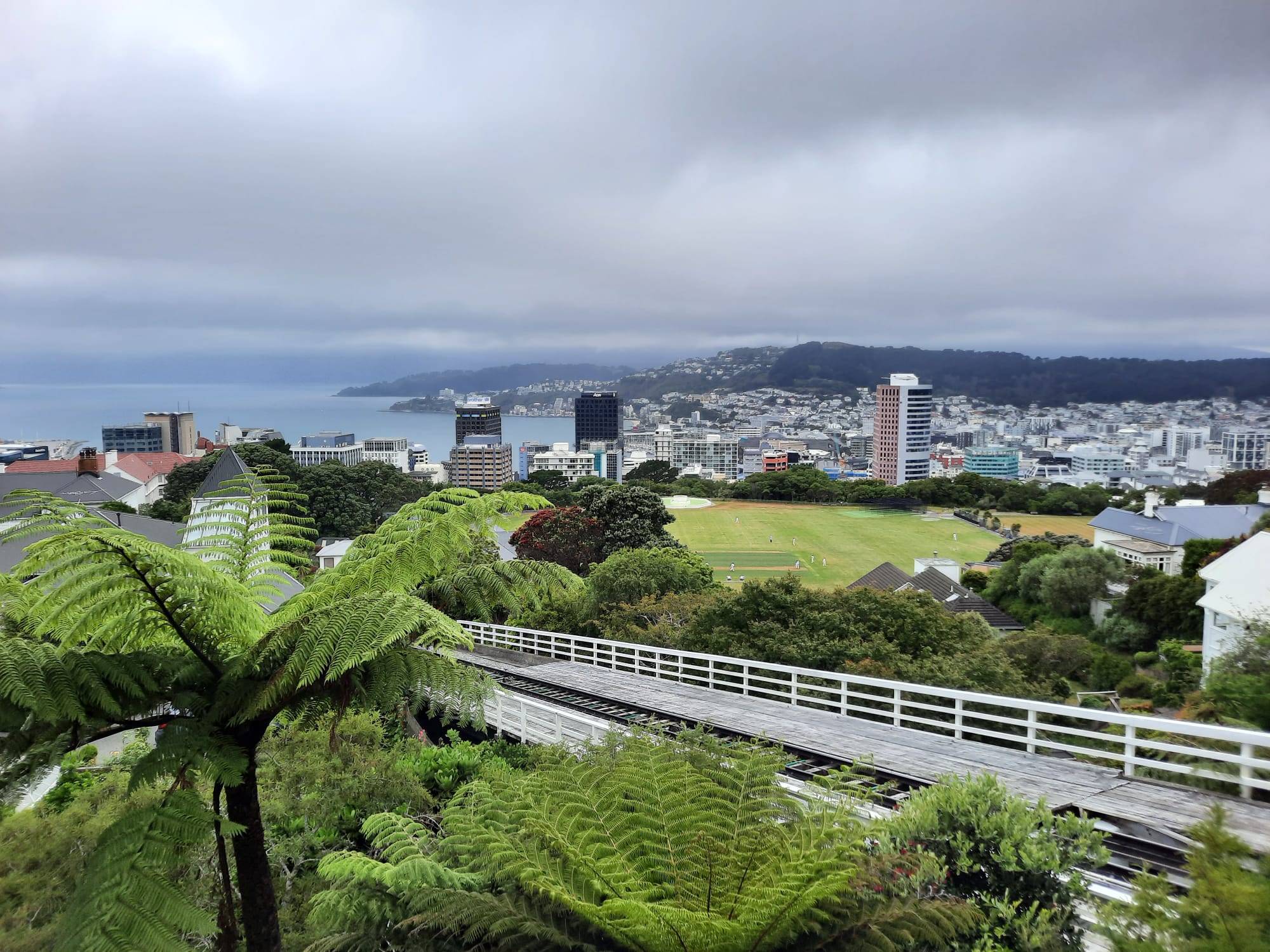48 Hours in Wellington – A Guide for Culture Lovers
New Zealand’s capital city Wellington is great for a long weekend: trendy eateries, historic sites and stunning views. Just pack for all weathers, no matter the season!
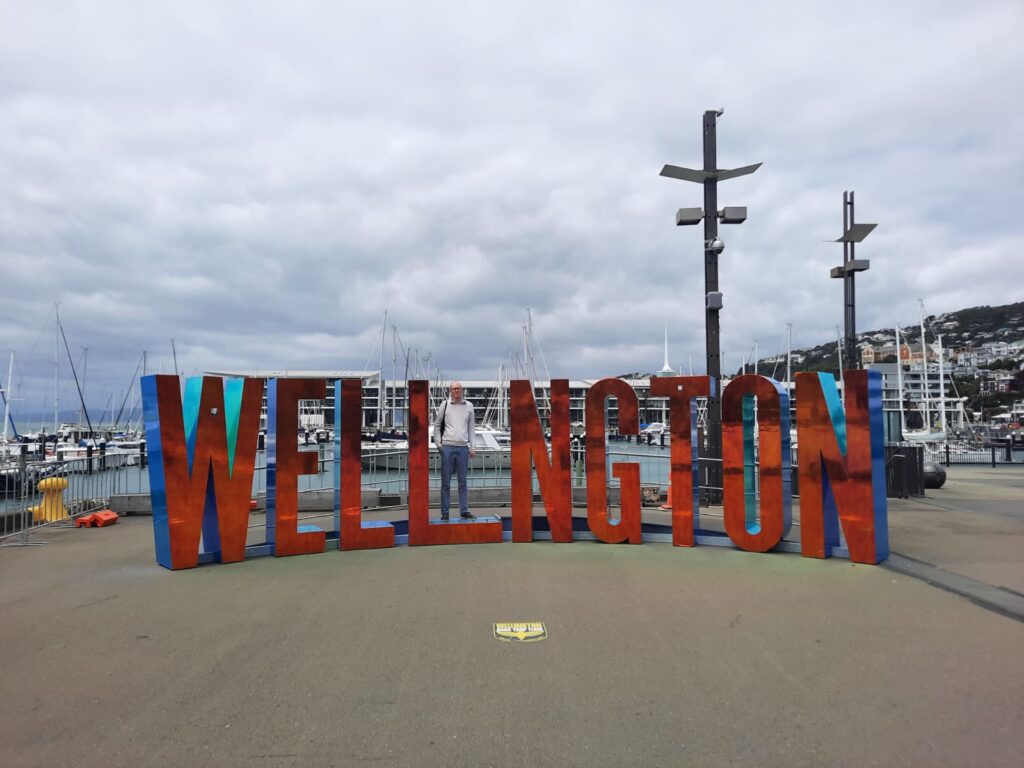
48 Hours in Wellington
This isn’t the first trip to New Zealand I’ve documented on the blog, but it is my first to Wellington in quite some time. The Salterton Arts Review lived in Wellington for a time while doing an internship as a budding museologist, more years ago than I now care to remember. But showing the Urban Geographer around the nation’s capital was a great opportunity to get reacquainted with it myself.
As always, a weekend is hardly long enough to experience all there is to see and do. But, compared to many cities, Wellington is compact, cutting down the travel time between sights. And you won’t need to bother with public transport unless you want to really go further afield. As well as giving you a feel for the place, however, walking will also expose you to the elements. As you peruse this post take a look at the varied weather in the photographs, bearing in mind this was only two days. Preparation for the weather is always a good idea, here: bring layers and preferably a raincoat, as umbrellas have a tendency to turn inside out in Windy Wellington.
With the right layers and rain gear, you’ll have a great time. Wellington is not New Zealand’s largest city, but as the capital it is the seat of government and several national institutions. You can see the national museum, visit Parliament, and more besides. Balance this with views of the city from the top of the cable car or Oriental Bay for best results, and don’t forget Cuba Street or other spots for top notch cafés, bars and restaurants.
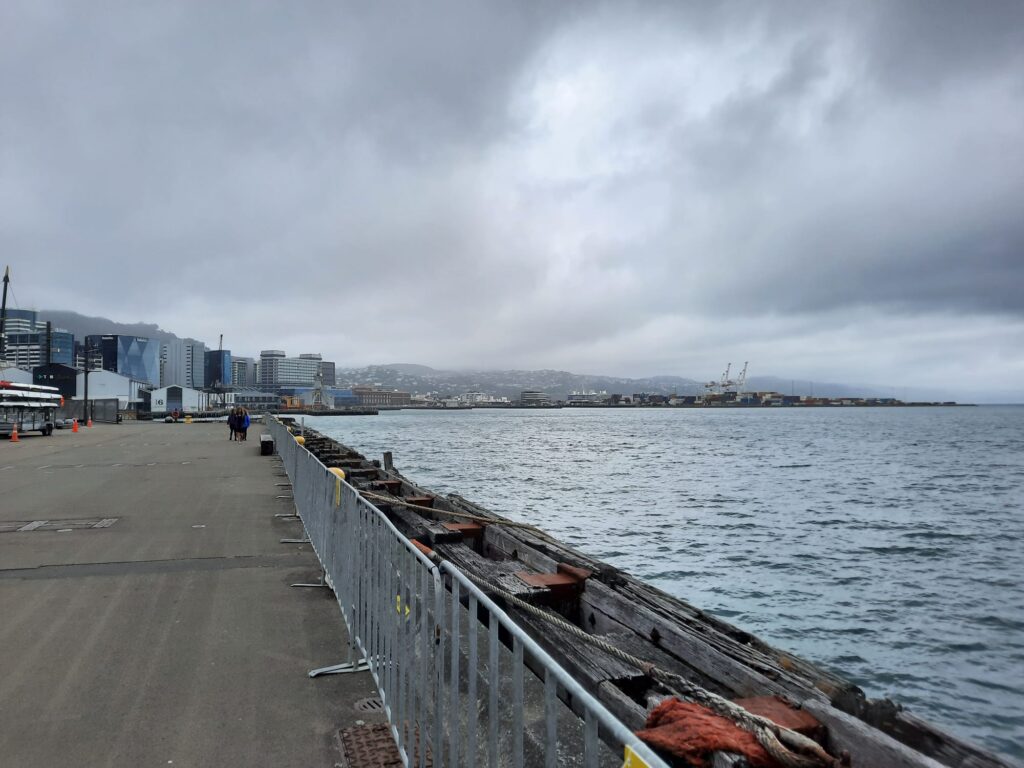
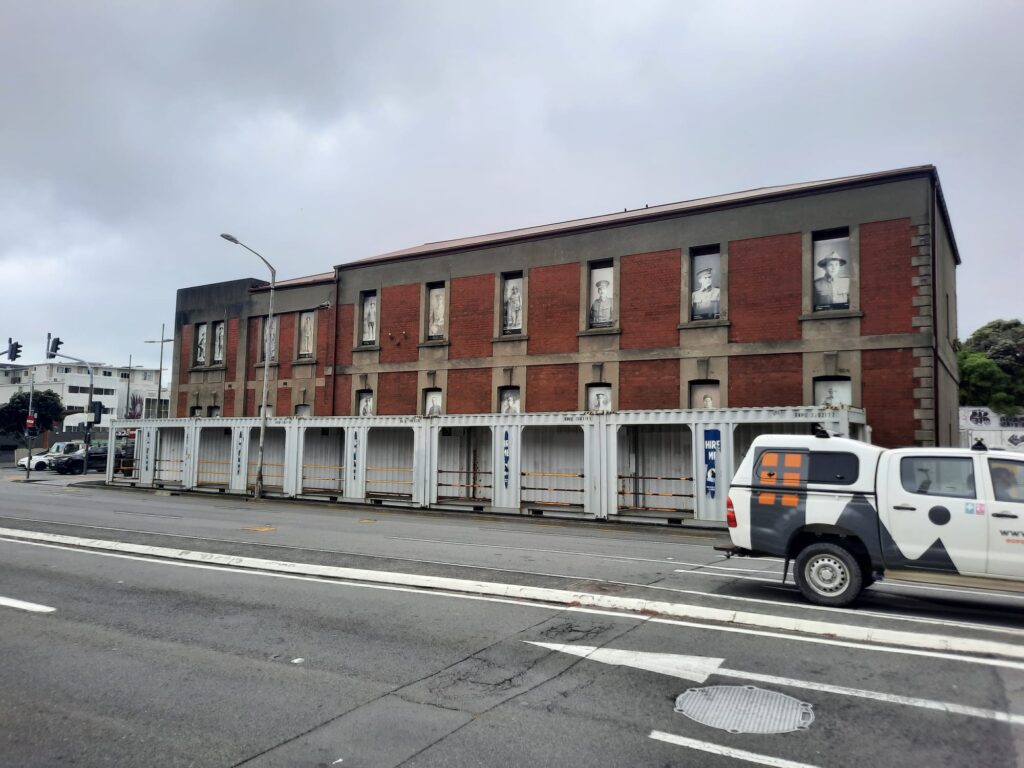
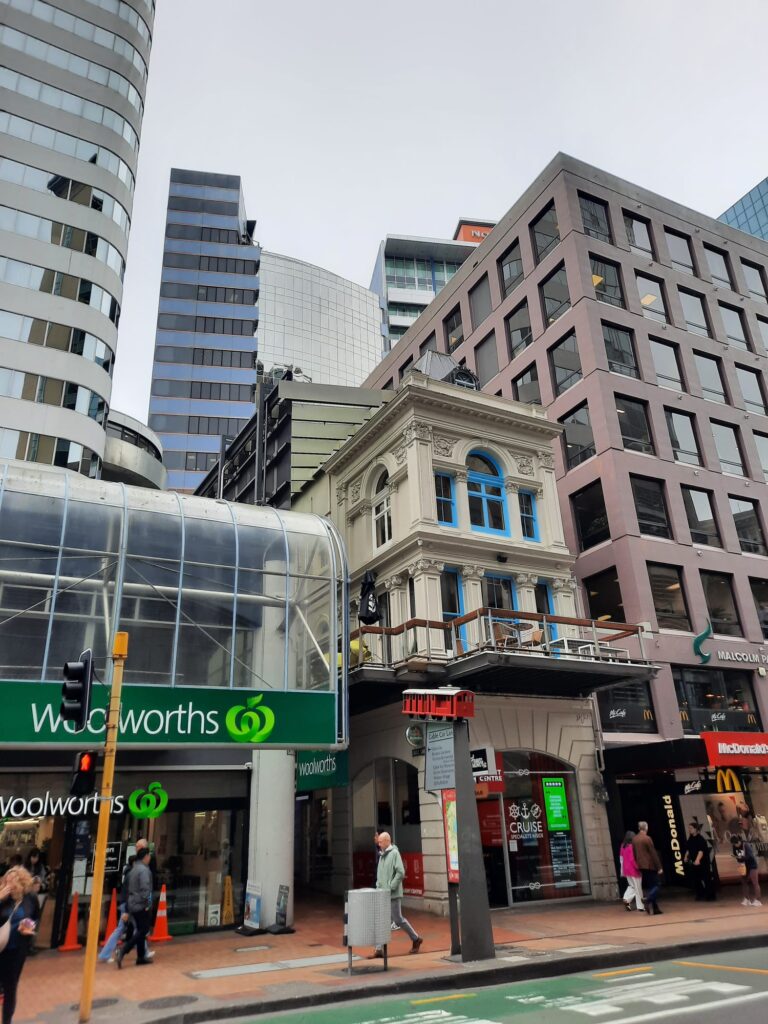
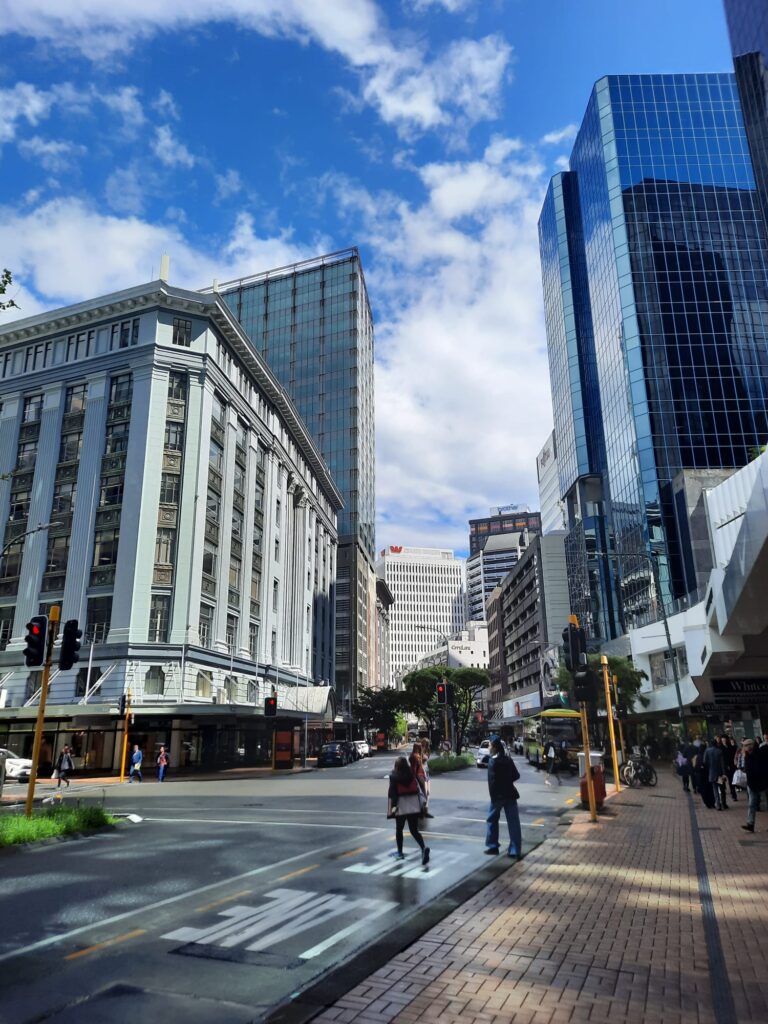

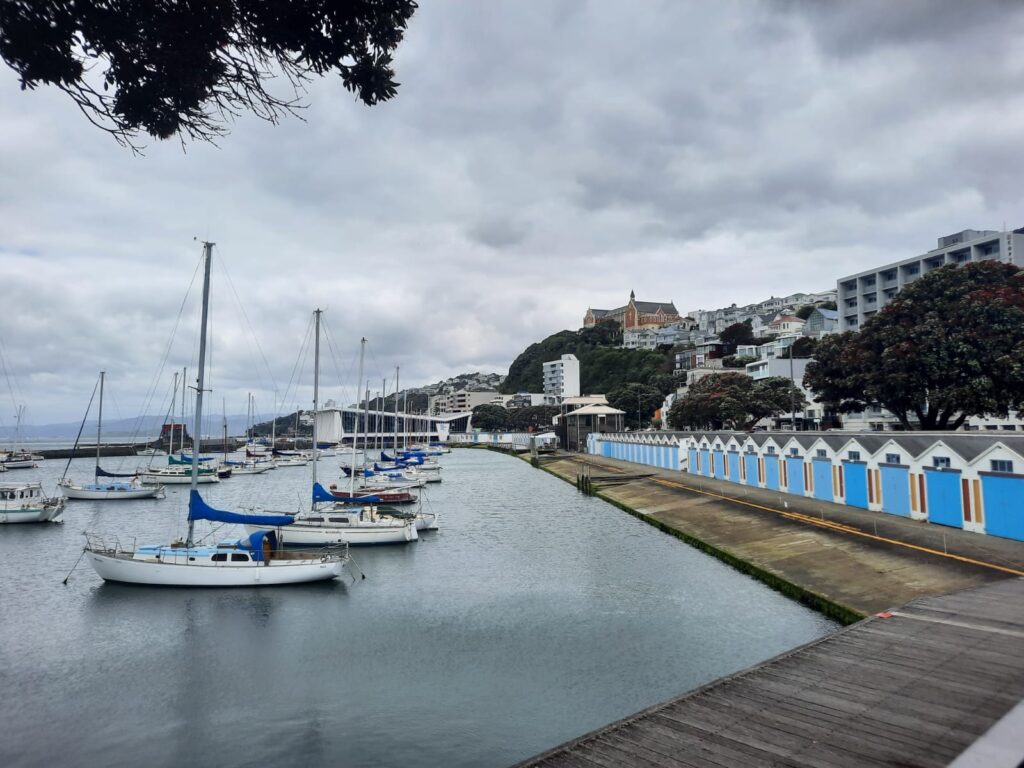
Wellington: A Potted History
Wellington, the southern-most capital city in the world, is located at the southwestern tip of New Zealand’s North Island, between Cook Strait and the Remutaka Range. Māori tradition is that the legendary Polynesian explorer Kupe discovered the area in the 10th century. Initial inhabitants from Māori iwi such as Rangitāne and Muaūpoko were disrupted and overwhelmed by northern iwi such as Te Āti Awa in the early 19th century. Early European explorers such as Abel Tasman and James Cook failed to enter Wellington Harbour due to poor weather conditions. If they had, they would have discovered one of the finest and deepest natural harbours in the world.
The city has multiple Māori names: Te Upoko o te Ika a Maui (The Head of Maui’s Fish), Te Whanganui-a-Tara (The Great Harbour of Tara) or Pōneke, which could be an abbreviation of Port Nicholson, an alternative name for Wellington Harbour. Wellington’s current layout was designed in 1840 by Captain William Mein Smith, the first Surveyor General for the New Zealand Company. It’s named, of course, for the Duke of Wellington, Arthur Wellesley. The first settler ships to arrive were the Tory in 1839 and the Aurora in 1840. It’s been New Zealand’s capital since 1865, following Kororāreka/Russell and Auckland. As of 2024 the Wellington metropolitan area has a population of over 200,000, which expands to over 400,000 including the nearby cities of Lower Hutt, Upper Hutt and Porirua.
Like many waterfront cities in New Zealand, there was extensive land reclamation in Wellington. Look for street names like Lambton Quay to understand where the waterline once was. Geography still plays an important role in the city. Its compact nature is partly due to the unsuitability of many of the surrounding hills for development. Conversely this means the city is very green, with parks, walks and conservation areas abundant. Its proximity to an active fault line continues to shape the city and its buildings. But overall it is a vibrant city, with cultural as well as political institutions, and a youthful and diverse population.
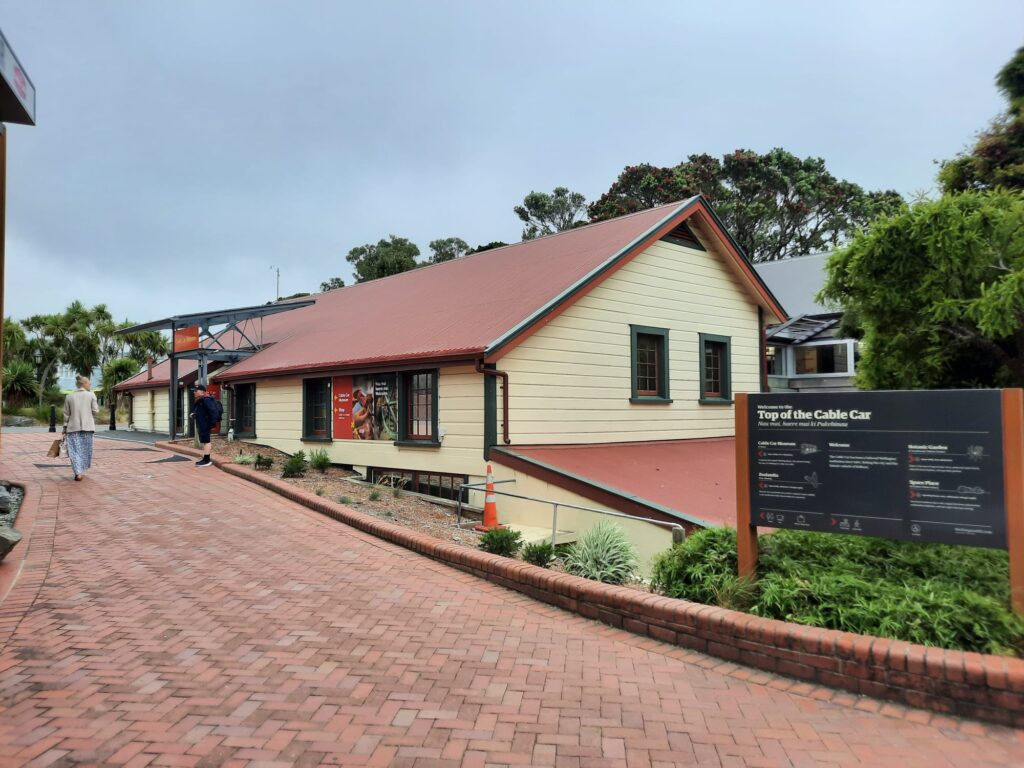
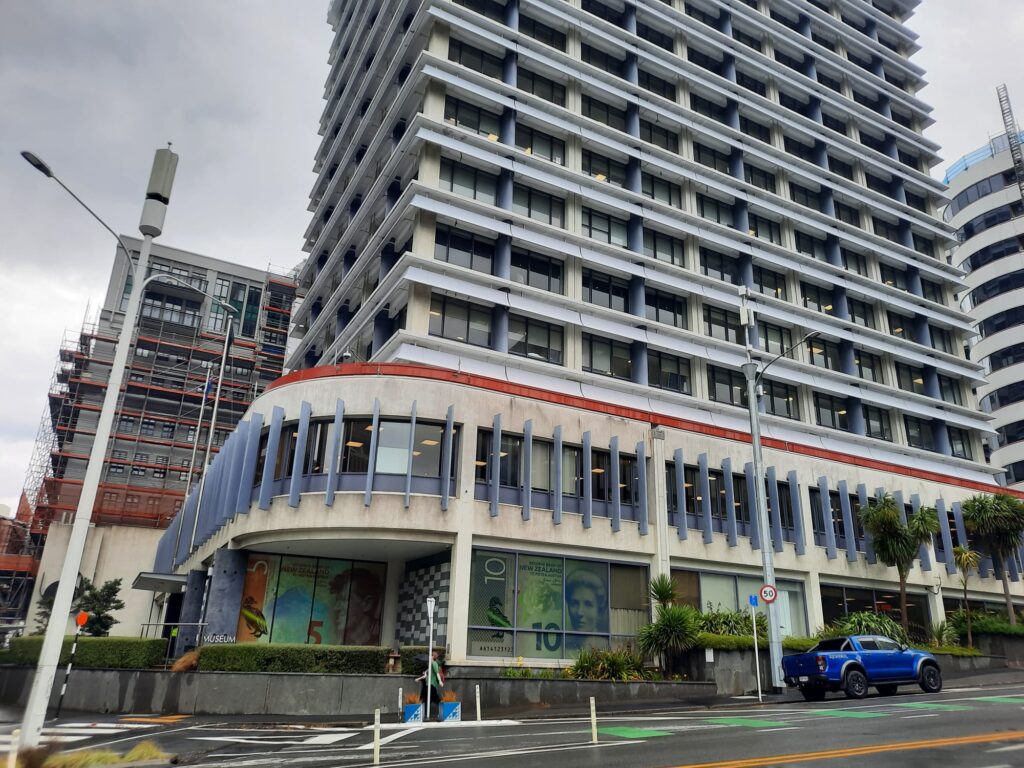
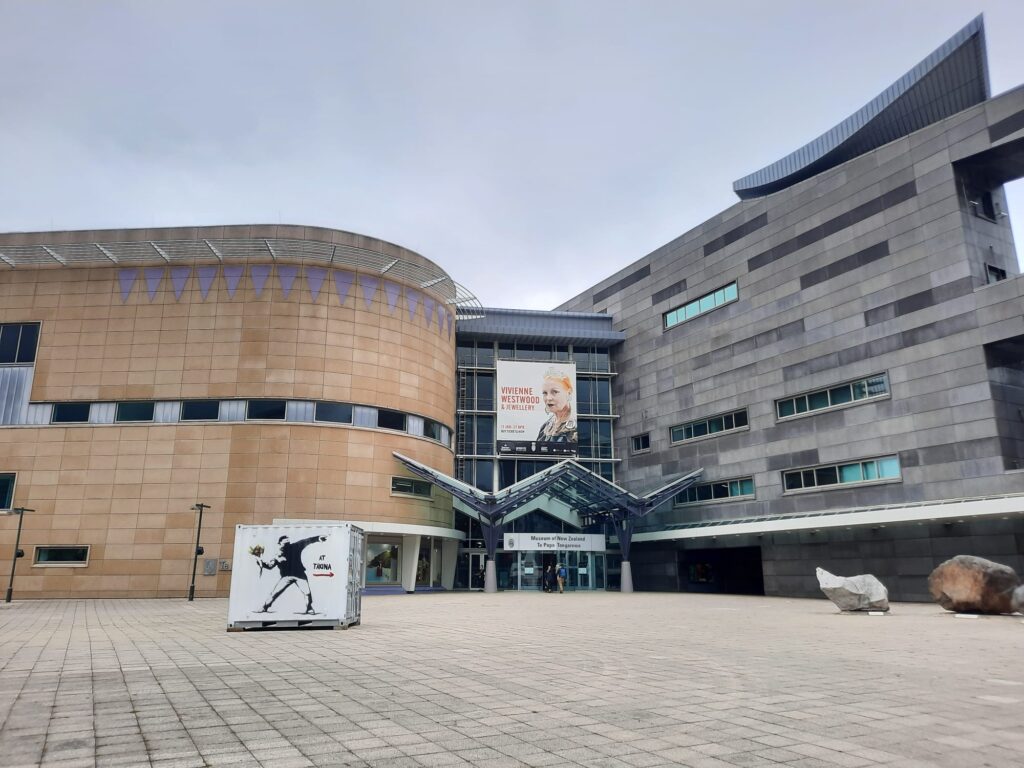
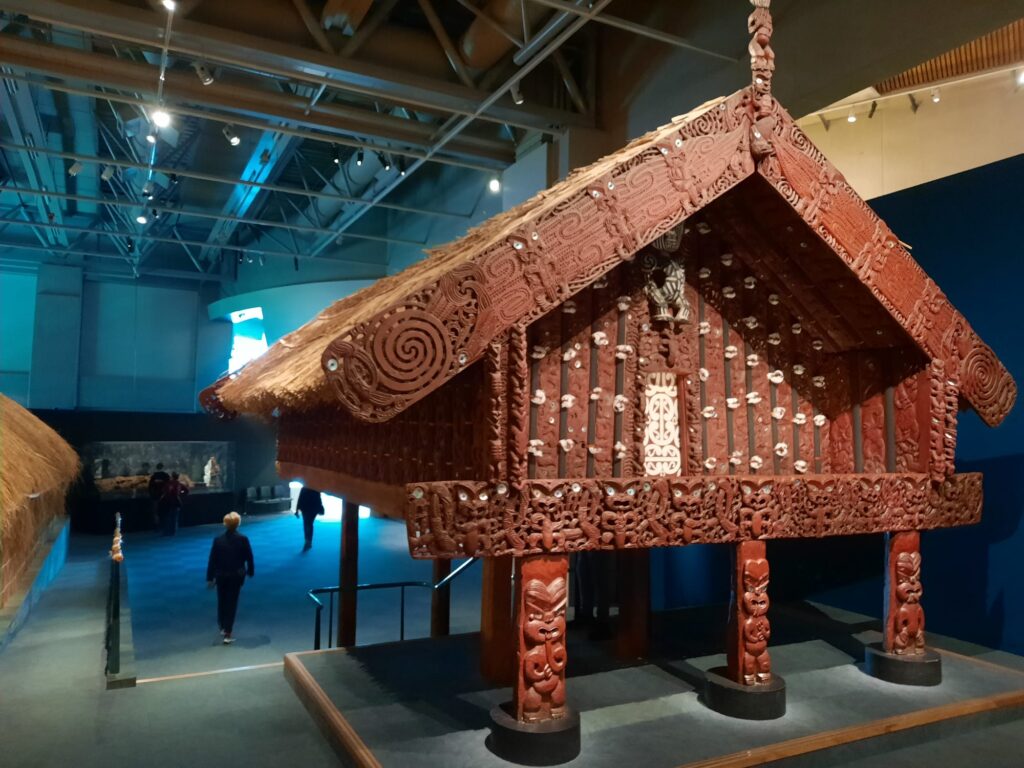
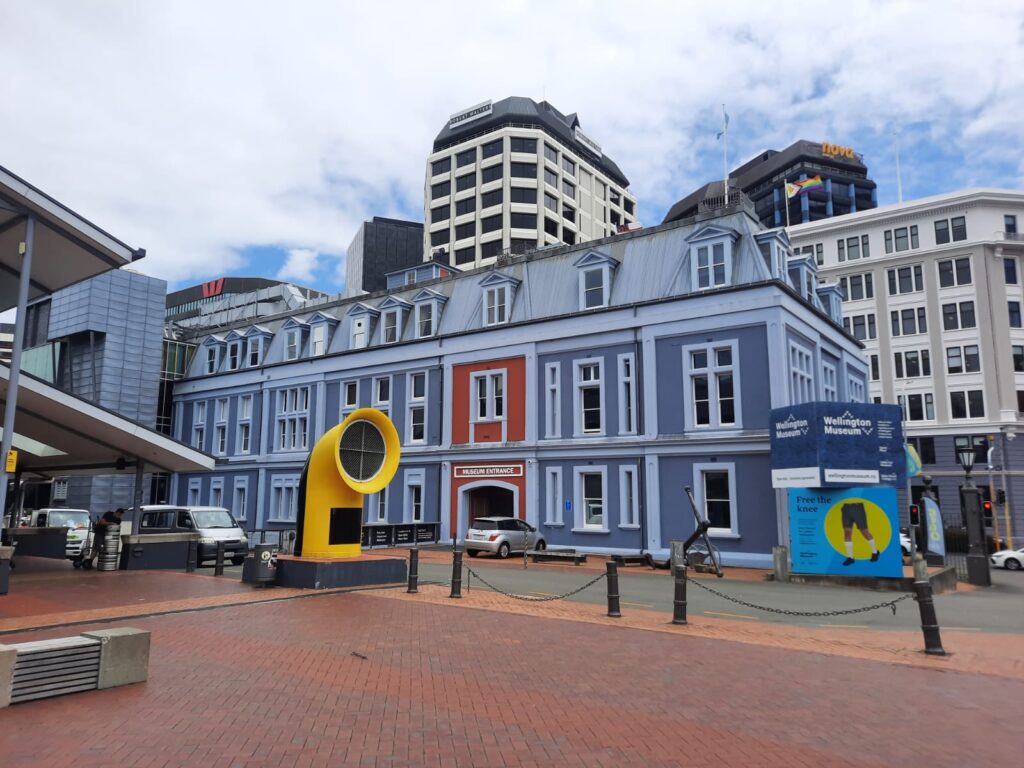
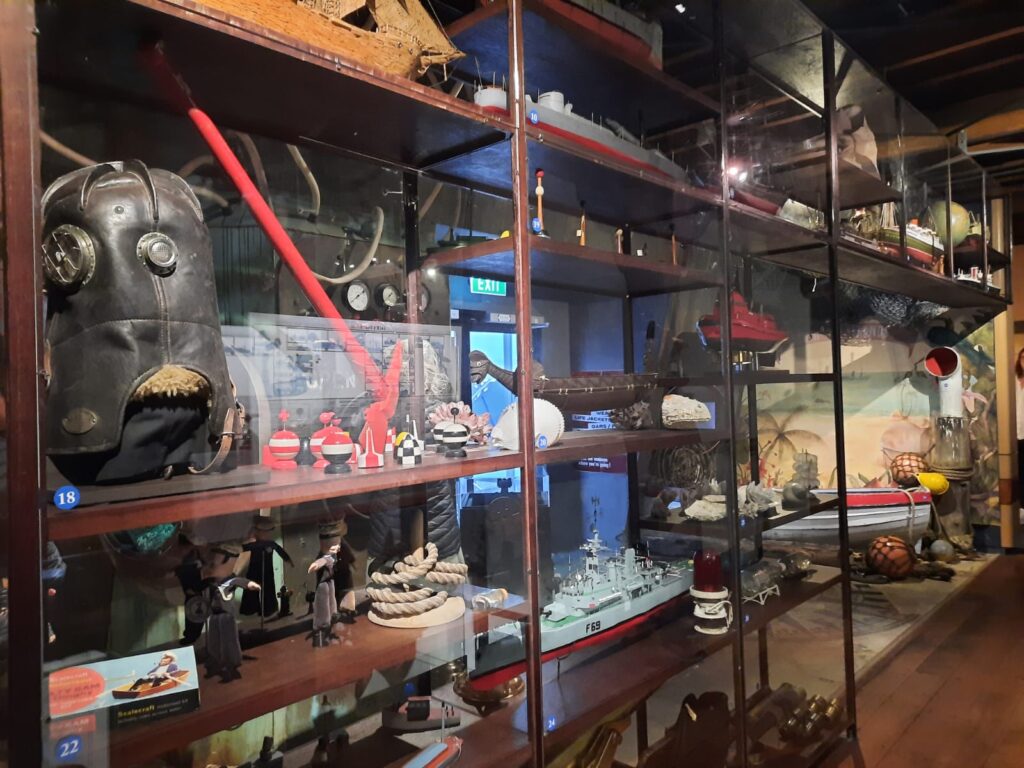
Wellington’s Museums
As is often the case with cities we visit on the Salterton Arts Review, there are more museums in Wellington than can be visited in 48 hours. However, the number is not quite as overwhelming as in most capital cities. I’ve included some suggestions here, and will share more detail in upcoming posts on the museums we visited.
- Museum of New Zealand Te Papa Tongarewa. New Zealand’s national museum. Te Papa, as it’s commonly known, tells the story of New Zealand’s land and people. Highlights include getting up close to a giant squid, or seeing larger-than-life people from history. Set aside an hour or two for a quick visit, or a good half day to do it thoroughly.
- Wellington Museum. Highly recommended: the Salterton Arts Review isn’t biased, but did do an internship here once upon a time. Wellington’s city museum is located in its former bond store. This is the perfect location to share the city’s maritime and social history through object-led displays. It even includes a time machine!
- Cable Car Museum. At the top of Wellington’s historic and much-loved cable car is a museum in its original winding house. Learn how Wellington’s residential suburbs developed, and see original cars and the winding mechanism.
- Nairn Street Cottage. Open for daily tours, this cottage tells the story of one family, the Wallises, who lived here from 1857 until the 1970s. A great way to understand social and technological changes in context.
- New Zealand Cricket Museum. A historic collection at Wellington’s home of cricket, the Basin Reserve.
- Reserve Bank of New Zealand Museum. Currently closed to visitors except school groups. Probably for experts anyway, who can see information online here.
Many museums in Wellington are free, although some have a charge for international visitors. The city’s museums are a great way to get to know Te Whanganui-a-Tara and Aotearoa New Zealand. And if the weather isn’t playing ball, they’re also a reliable indoor alternative while you wait to see if that wind chases the rain clouds away.

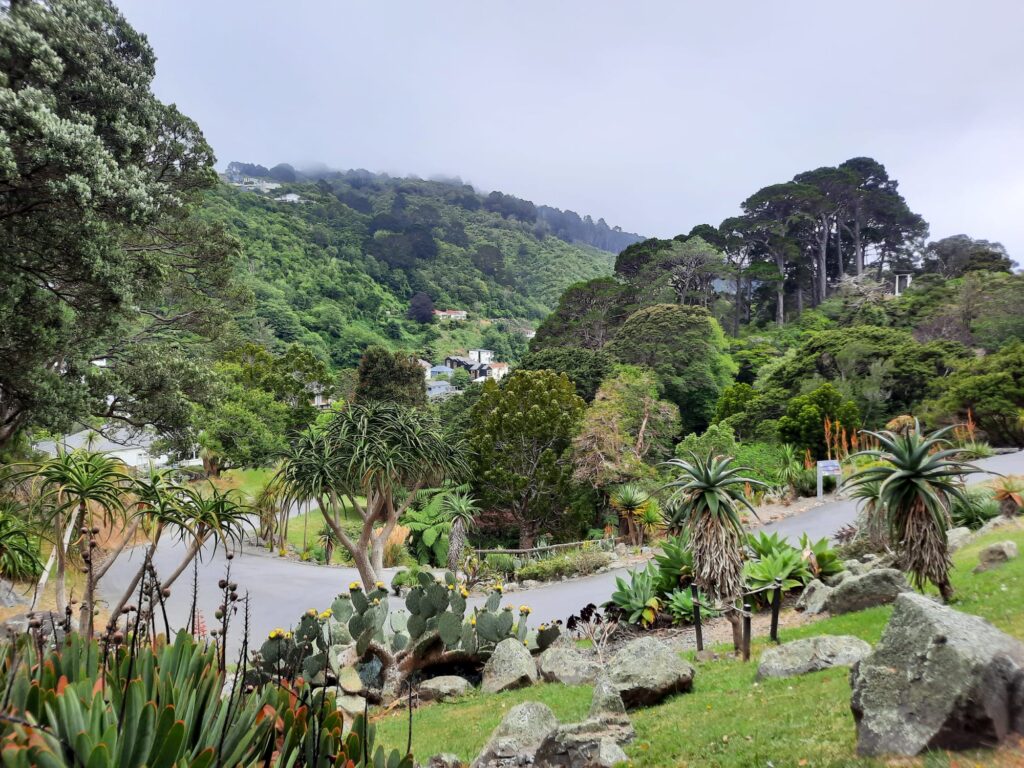
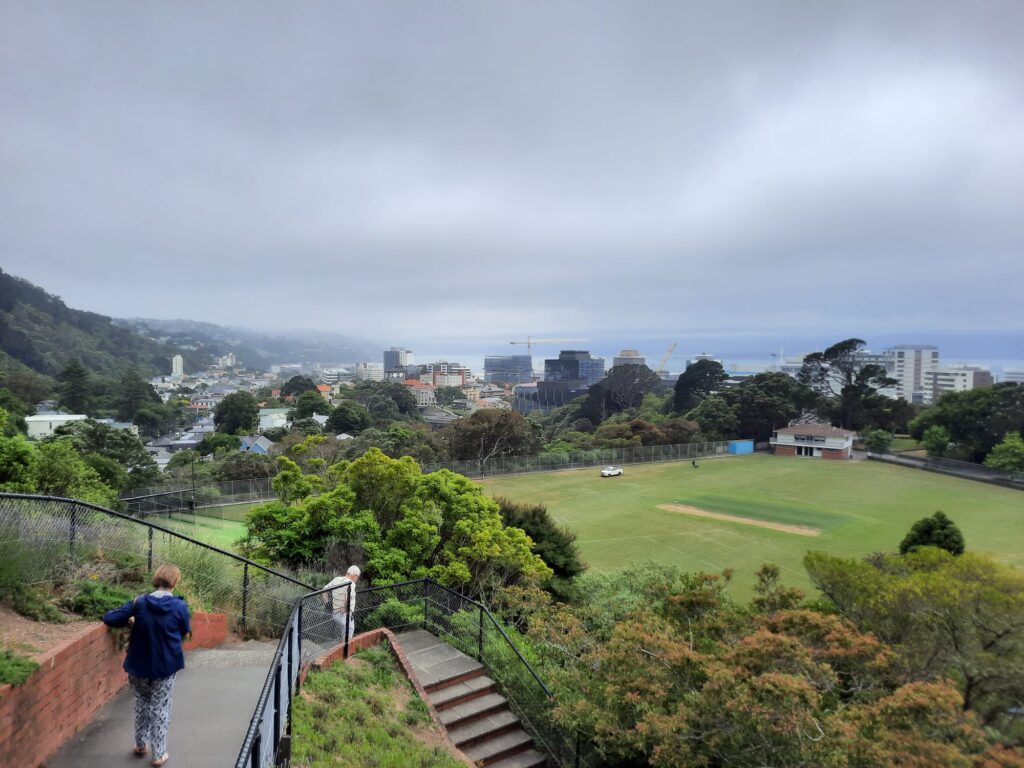
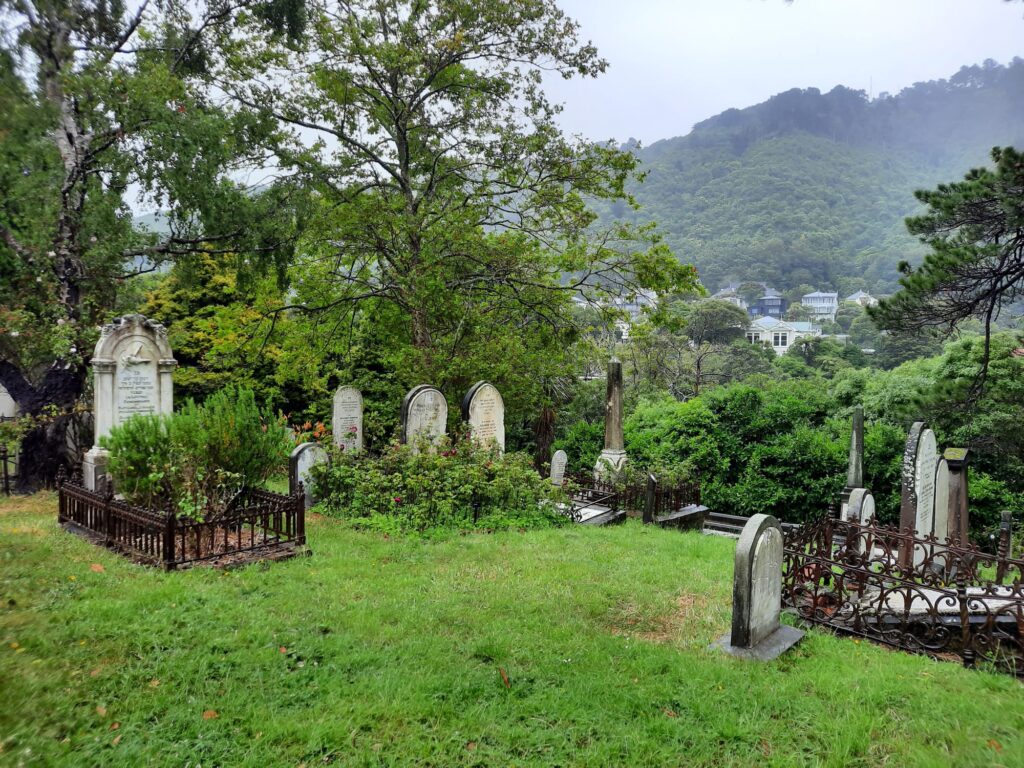
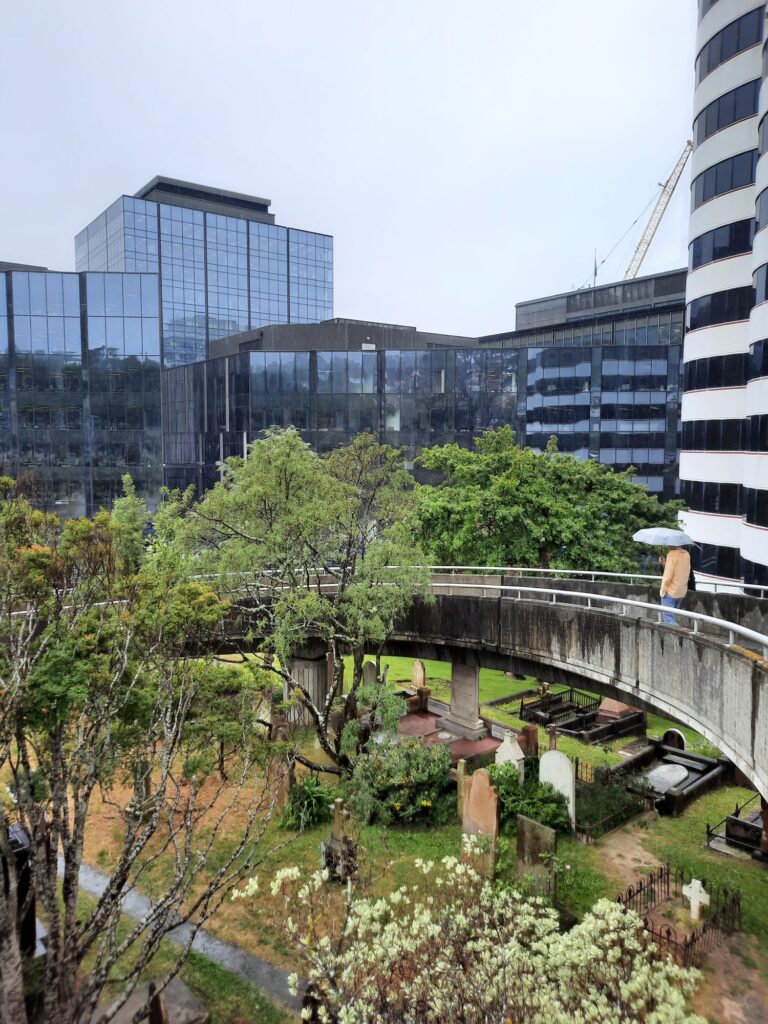
Cable Car > Botanic Gardens > Bolton Street Cemetery Walk
The Salterton Arts Review isn’t normally so prescriptive about how you see the sights in a new place, but on this occasion we were given good advice about a walk which takes in some excellent activities and highlights, so are passing it on to you. The walk can be done in either direction, but why not let the cable car do the work of getting you up the hill?
We start on Lambton Quay: look for signs for the Cable Car inside a small shopping arcade. Purchase a one way ticket, and climb aboard. What started as the Kelburn & Karori Tramway Company in 1889 is now a much-beloved part of Wellington’s transport system and identity. It’s also New Zealand’s only funicular railway. Ride it all the way to the top, and enjoy the lightshows in the tunnels.
Once at the top, after an optional stop at the café or Cable Car Museum (free), enter the adjacent Wellington Botanic Garden. With over 150 years of history there’s a mix of traditional and more modern plantings, and also a sizeable Begonia House to check out. Follow signs for the Downhill Path and then Bolton Street Cemetery, with any detours that take your fancy on the way.
The Bolton Street Cemetery is an interesting case study in juggling historic preservation with the needs of an expanding city. Originally a site for Māori burials, it was also Wellington’s oldest settler cemetery, with burials starting in 1841. It was divided into Anglican, Jewish and public areas, with many notable early residents buried here. A separate Roman Catholic cemetery still exists in Kelburn. The cemetery closed to burials in 1892. Between 1968 and 1971 controversial plans to direct the city’s motorway through the cemetery went ahead, with a large number of burials disinterred and reinterred under the Early Settlers Memorial Lawn. The experience of walking through such a historic spot only to pass over a busy motorway partway through is a unique one.
This walk brings you out just above Parliament, not far from Lambton Quay once more. If you’re hungry after all that walking, look out for Generator café near the exit from Bolton Street Cemetery.
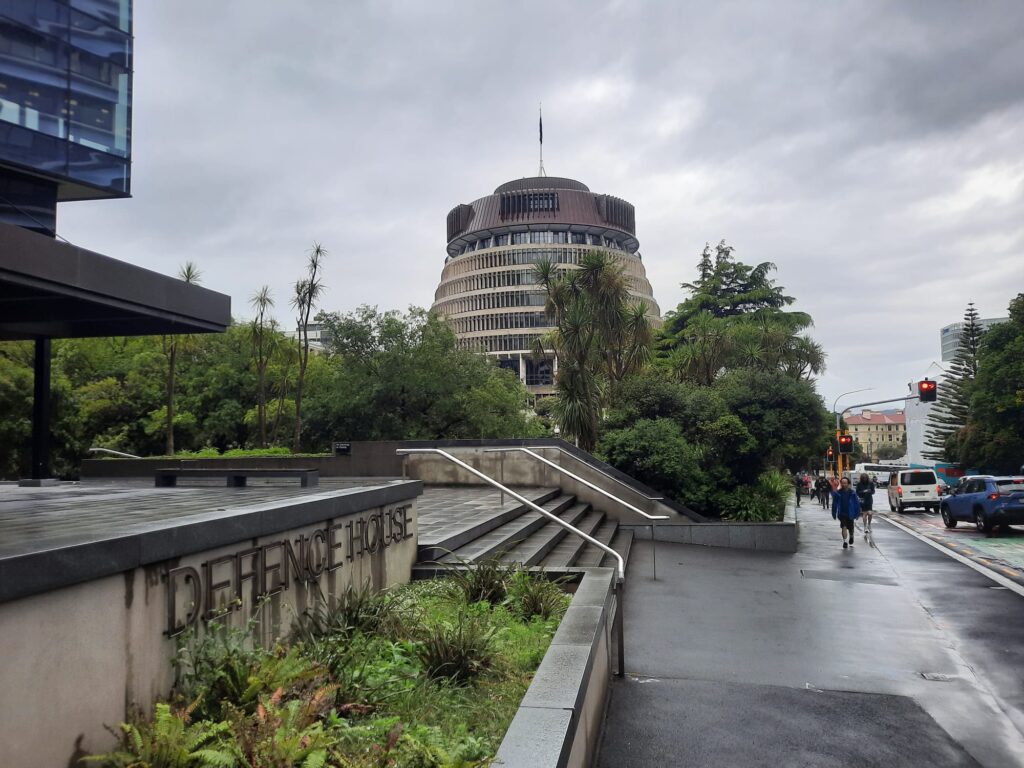
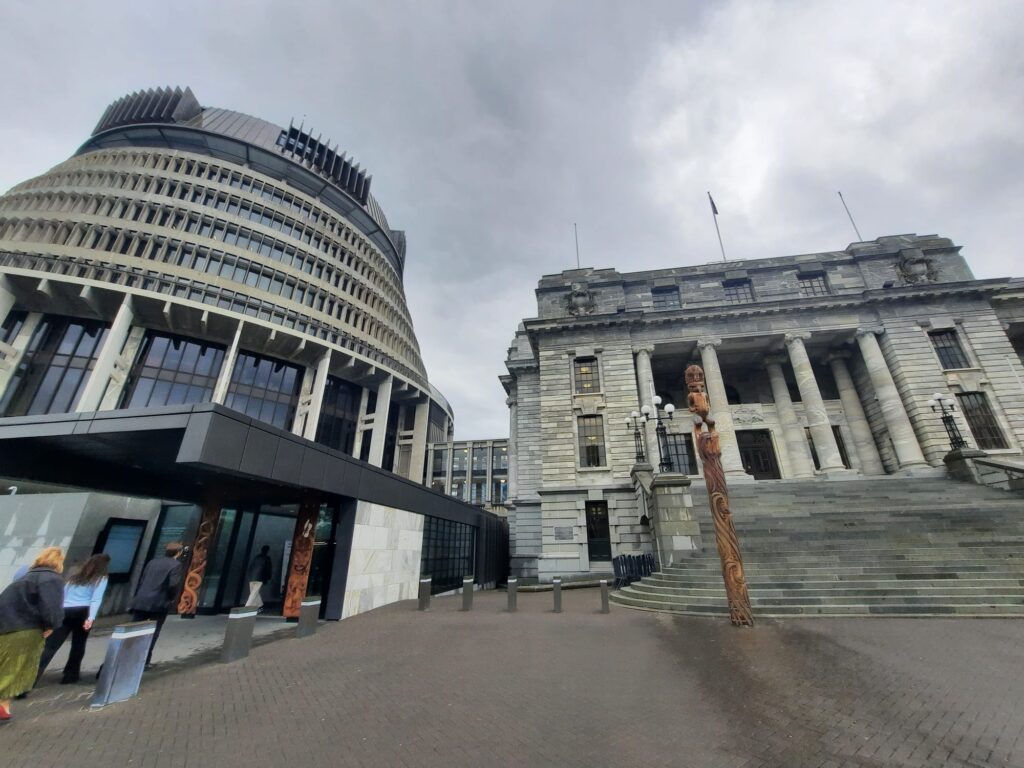
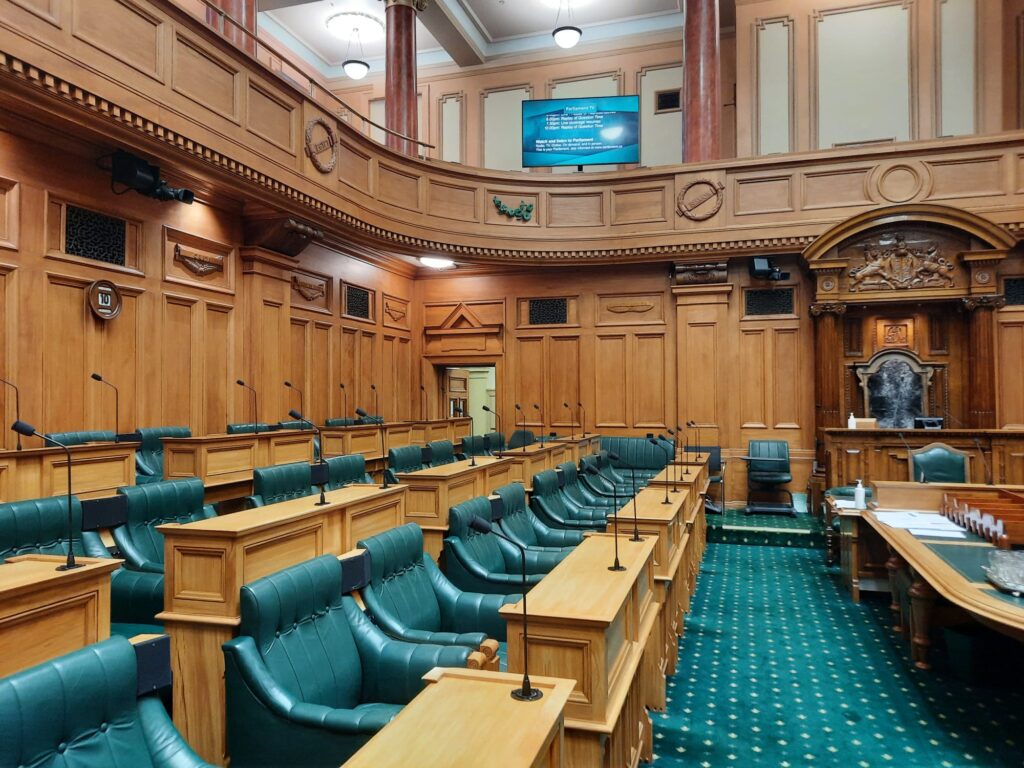
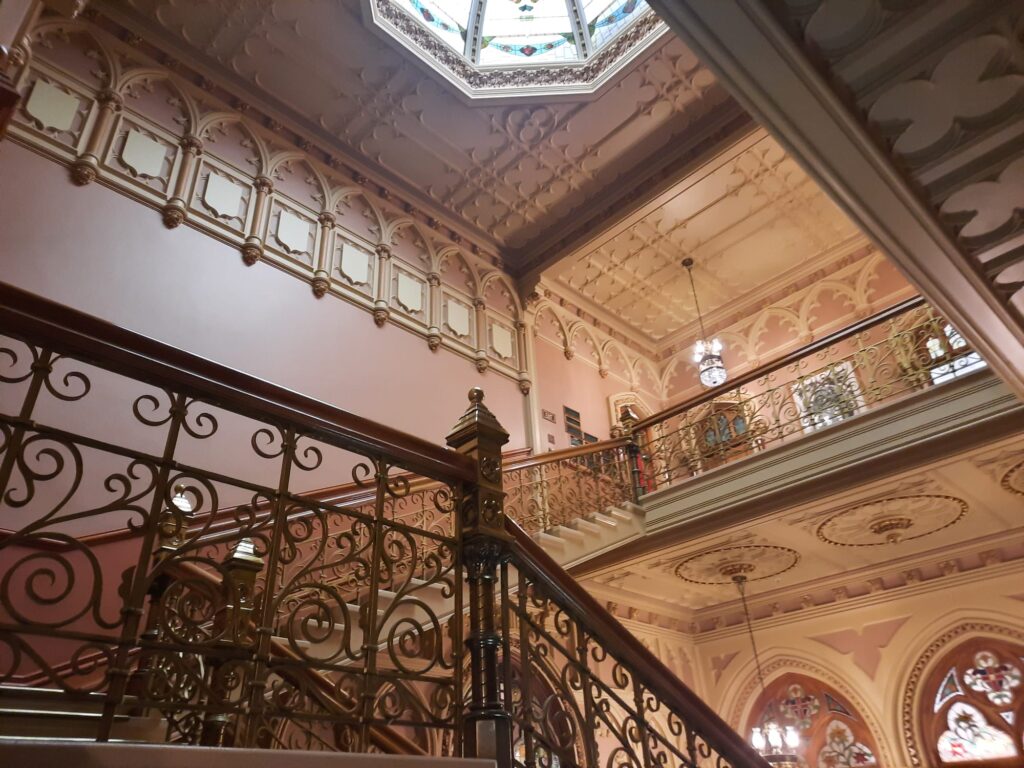
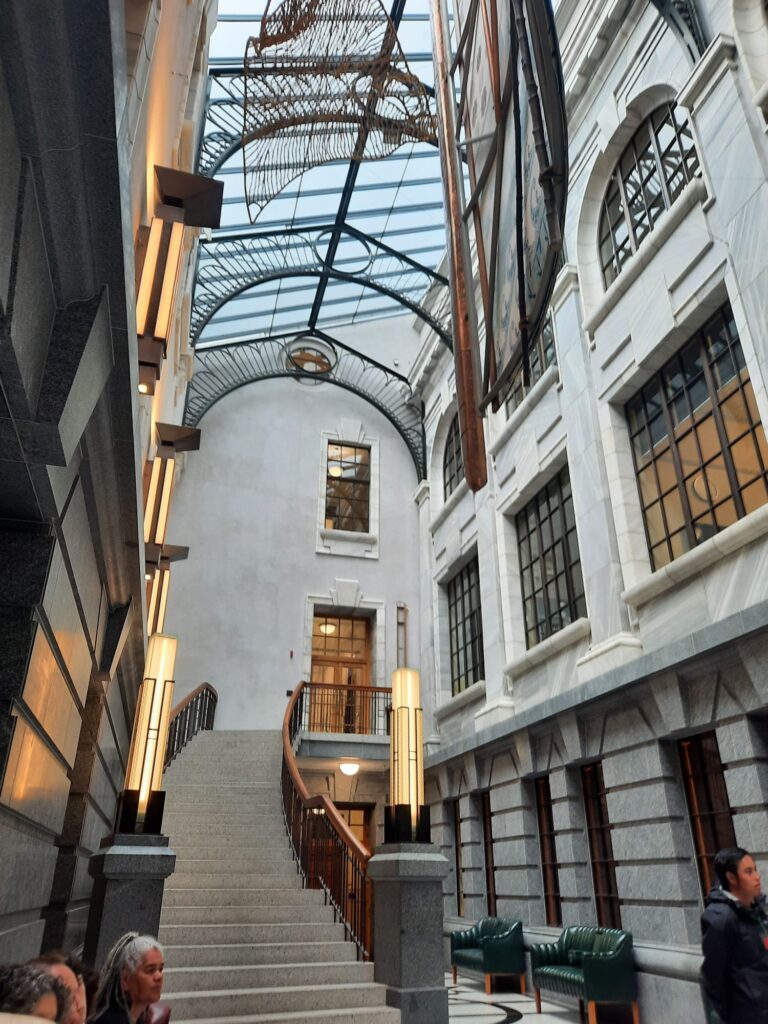
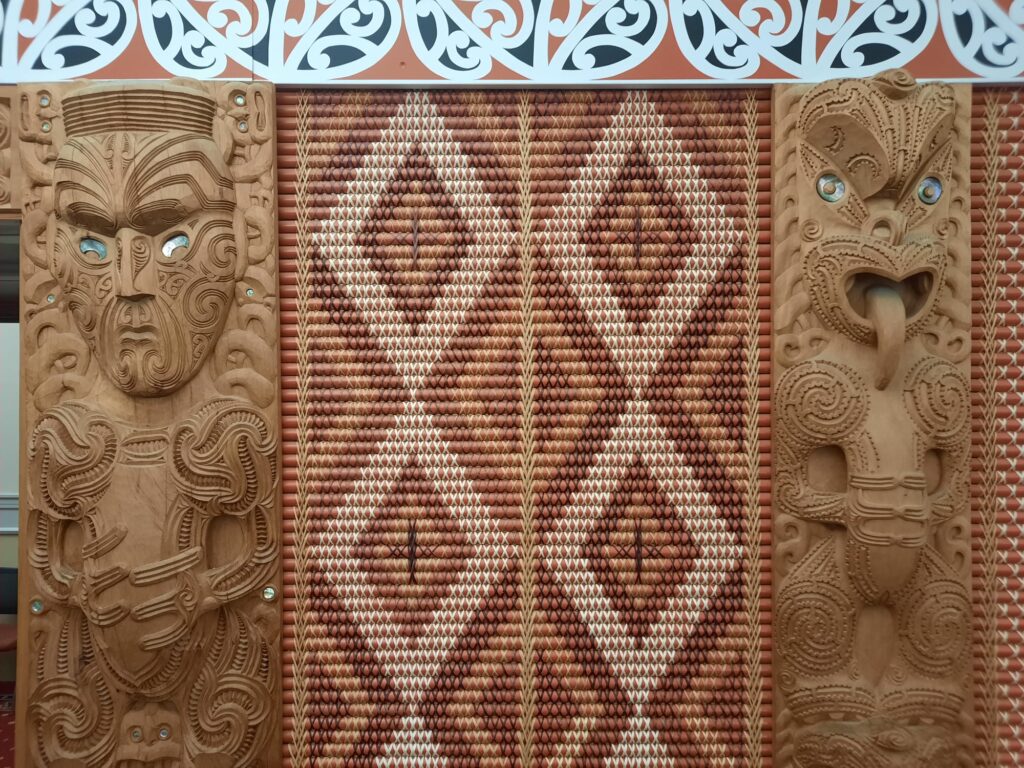
“The Beehive” & New Zealand’s Parliament
Interestingly for a relatively young country, New Zealand’s parliament is one of the oldest continuingly-functioning legislatures in the world, dating to 1854. It has met in Wellington since 1865. The buildings, however, are not all as historic.
The iconic image of New Zealand’s parliament is “The Beehive”. Constructed between 1969 and 1981, it houses the executive wing of Wellington’s parliament buildings. The design is by British architect Sir Basil Spence. We visited The Beehive as part of a free introductory tour of New Zealand’s parliament, which is best booked ahead online. The tour takes in The Beehive as well as the adjacent, more traditional building, and the Parliamentary Library. It also covers New Zealand’s parliamentary processes and history, including being the first country to give women the vote in 1893.
It’s the less iconic building which houses the actual parliamentary chamber. It also has what used to be the upper chamber, until the demise of this second layer of legislative process in 1951. Parliament House dates to 1922 and is in neoclassical style. An earlier version burned down, except for the still extant Parliamentary Library (1899). The library is high Victorian Gothic, but with loads of native timbers and other local flourishes.
Despite having once lived in Wellington, this was my first visit to the nation’s parliament. I found it informative, as did the many domestic and international tourists who were part of our group. It was also a relaxed, very New Zealand kind of experience. Nice and easy to sign up and go through security (much easier than when I went to Speaker’s House in London), and a lot of opportunity to ask questions and chat. Highly recommended, and you can check out more specialised tour options here.
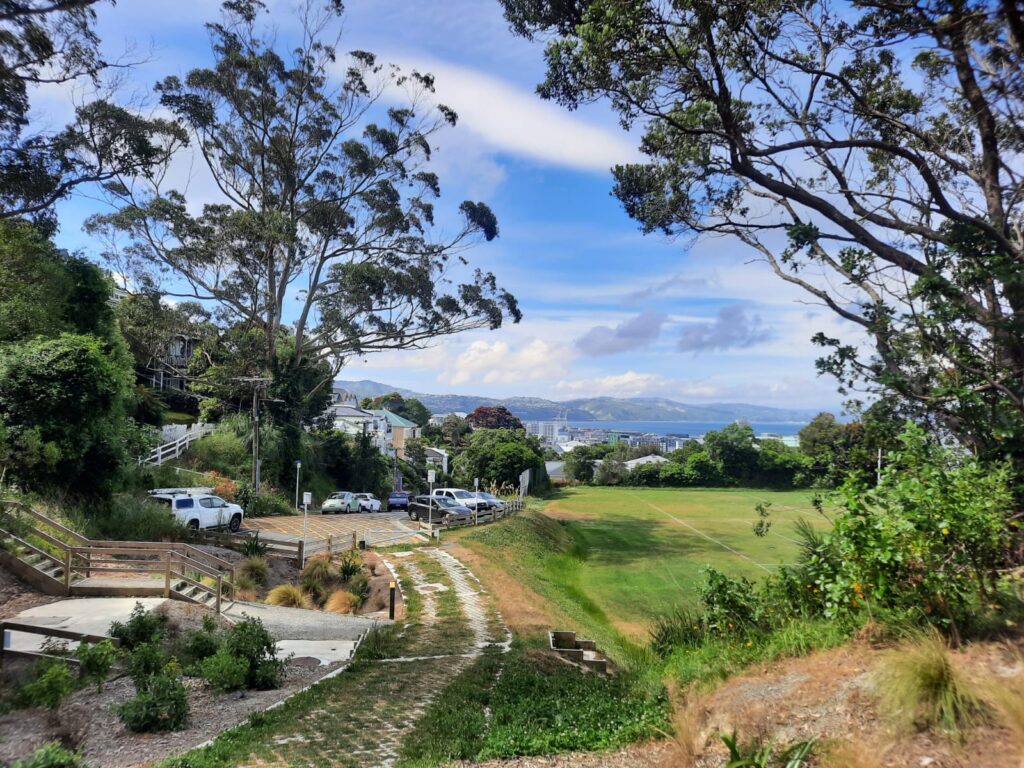
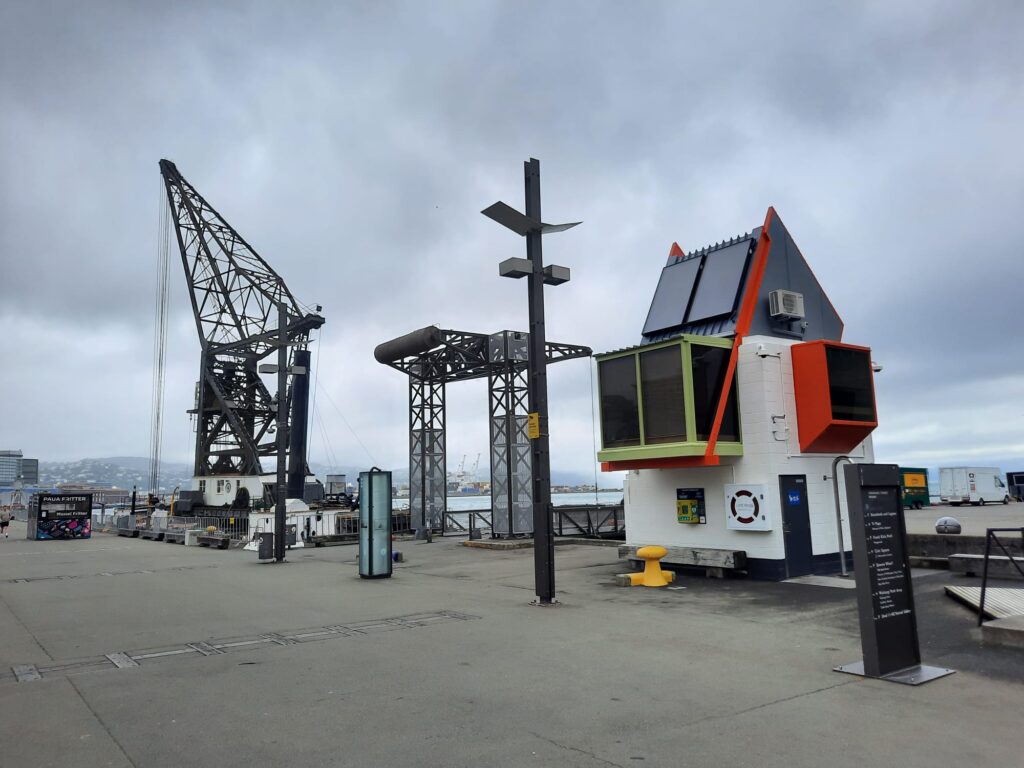


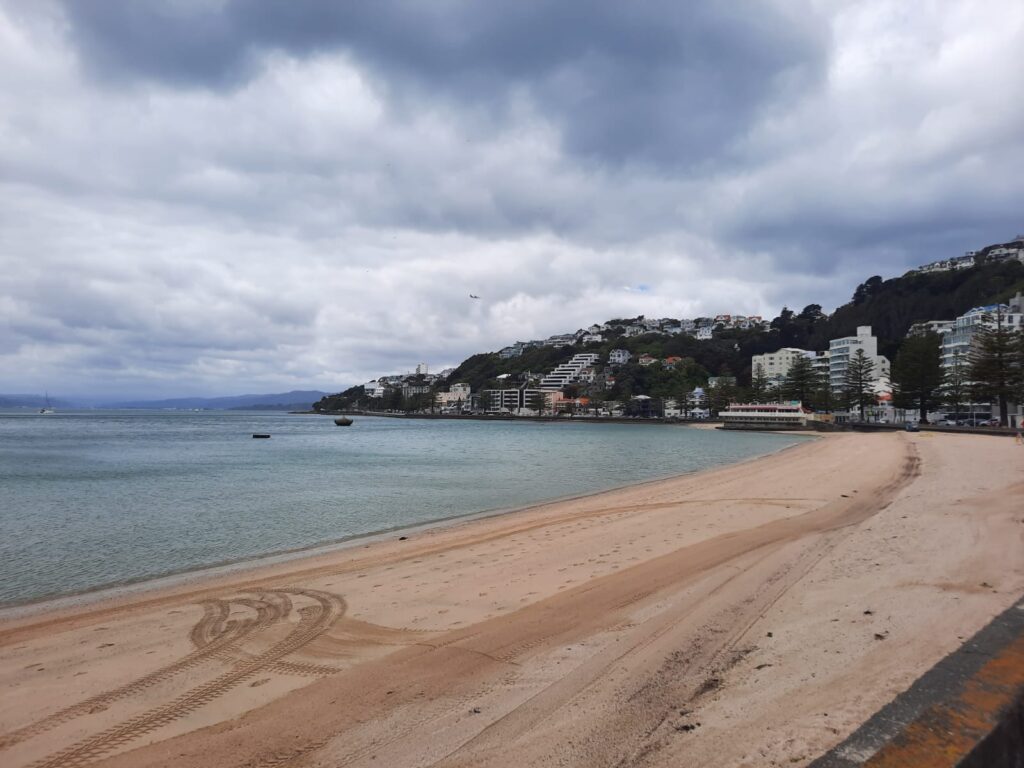
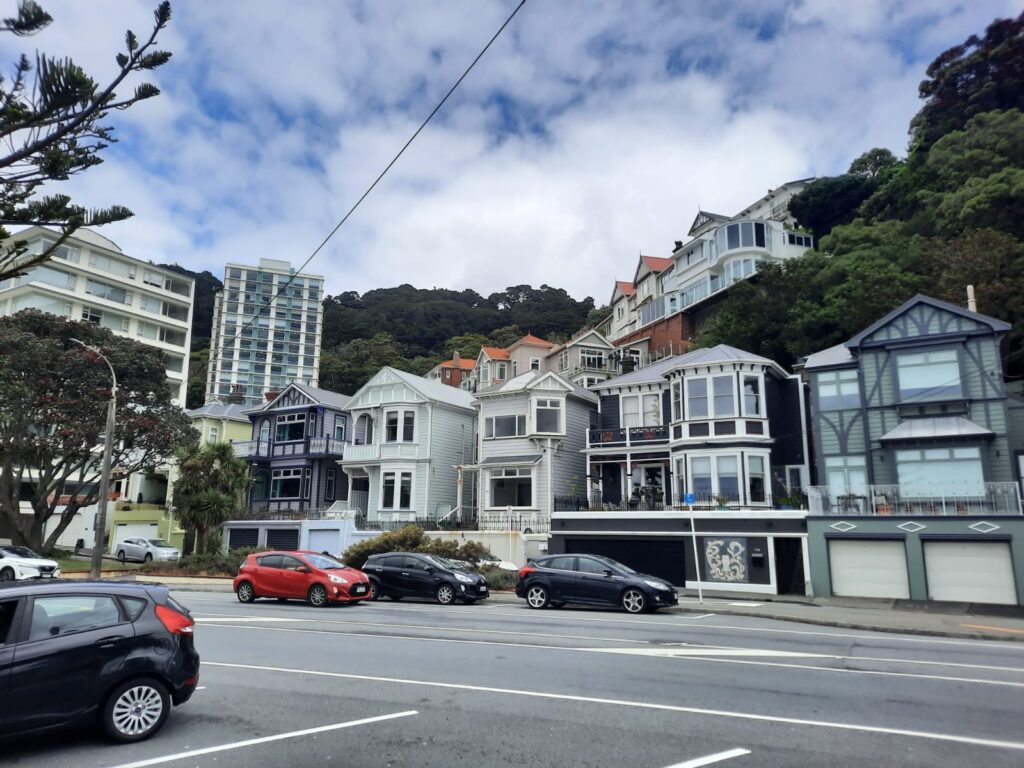
Other Places of Interest
We’ve covered a few key components so far of 48 hours in Wellington. You know a bit of history now, and have some information on museums, Parliament, and a suggested walk that combines history and nature. Now let’s cover off a few other things you may want to fit in. Some of these are a little further afield, but all are achievable as part of a short-stay itinerary.
- Zealandia Ecosanctuary. The world’s first fully-fenced urban ecosanctuary is easy to get to from central Wellington. There’s even a free shuttle departing from the top terminus of the Cable Car. New Zealand has a lot of biodiversity and unique species, but many of them cannot withstand introduced predators such as rats, stoats and possums. Zealandia provides a safe location for birds, lizards and other native species. Various guided options available as well as general admission. Closed Tuesdays.
- City to Sea Walkway. Another option to get outdoors and meet some native species is the City to Sea Walk. Starting near Parliament and ending in Island Bay 14.4 KM away, the City to Sea walk can also be done in stages. You’ll pass the Botanic Gardens, Bolton Street Cemetery, Cable Car, but also see what life is like in Wellington’s suburbs. You can do the walk in either direction, but to do it in one day you’ll need to be relatively fit.
- Explore the Waterfront. Wellington’s waterfront is a mixture of work and play. At one end you will see shipping containers and perhaps the Interislander ferry coming or going. If you’re moving between central Wellington sights, the waterfront is a nice way to explore, get some fresh air, and see some views. Look out for historic wharfside infrastructure, public art, and green spaces like Frank Kitts Park. There are frequent events along here, and you can find details of heritage trails here.
- Oriental Bay. A few minutes’ walk along the waterfront past Te Papa will bring you to Oriental Bay. This lovely urban beach is great for swimming (in the right conditions), and for views back to Wellington’s CBD. It’s also an affluent suburb, with great examples of Victorian and later timber houses.
- Cuba Street. Finally, don’t miss Cuba Street on a trip to Wellington. It’s one of the city’s main shopping streets, with more of an independent vibe than nearby Lambton Quay. There are lots of cafés and restaurants, buskers, and of course the much-loved bucket fountain.
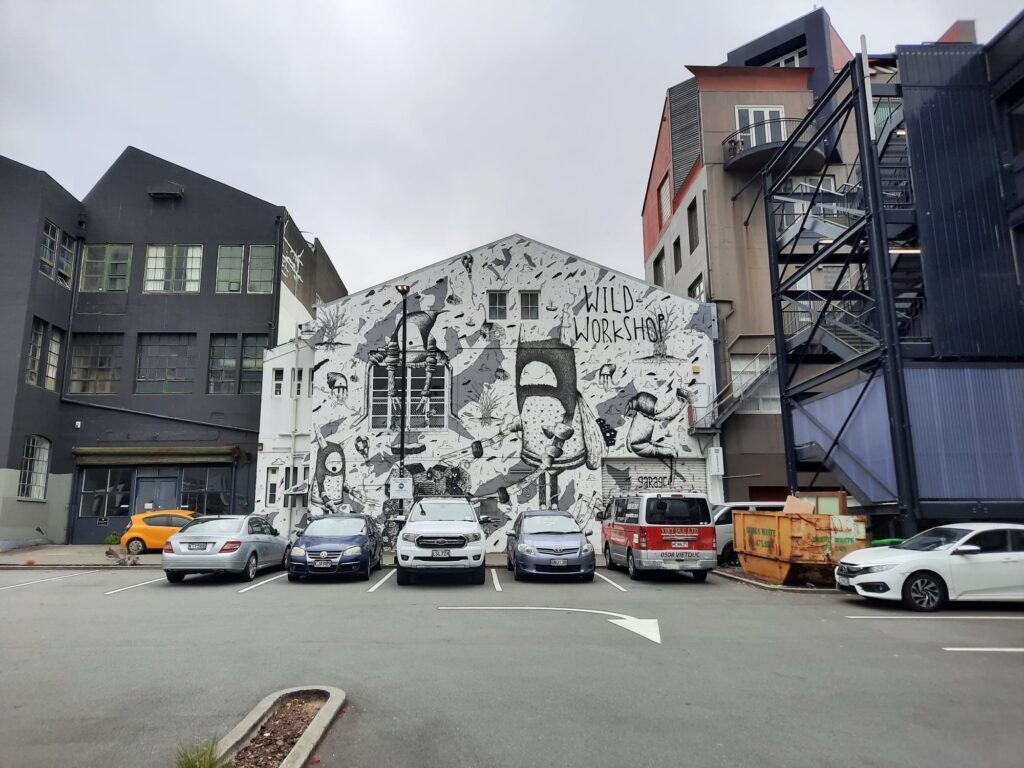
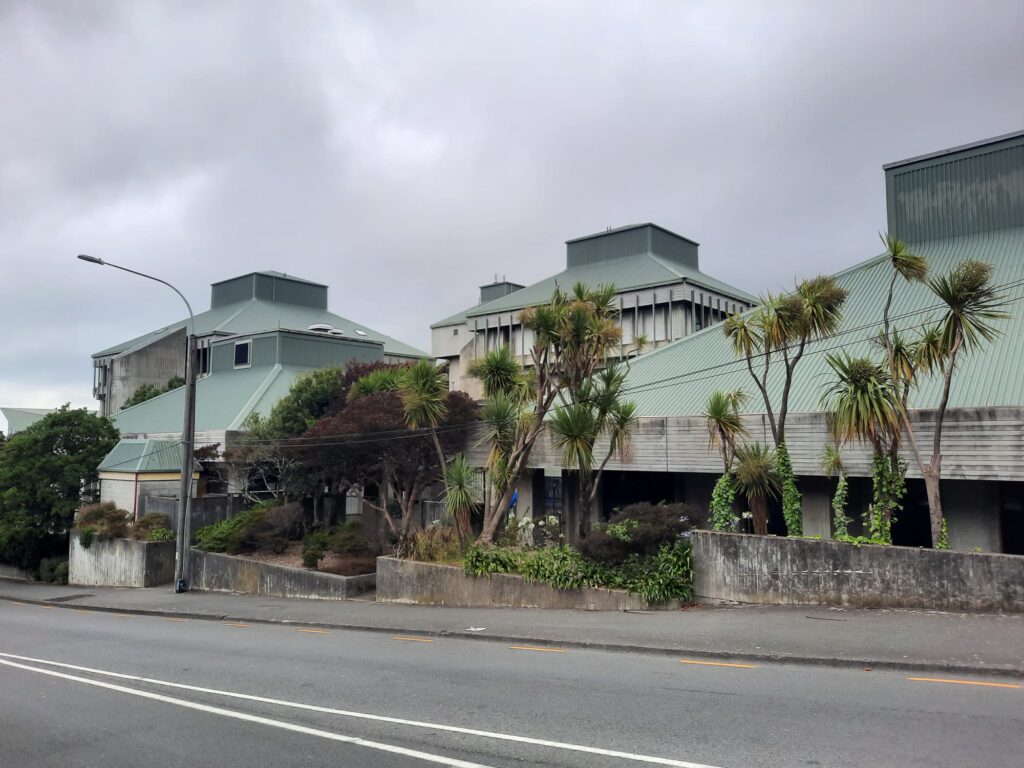
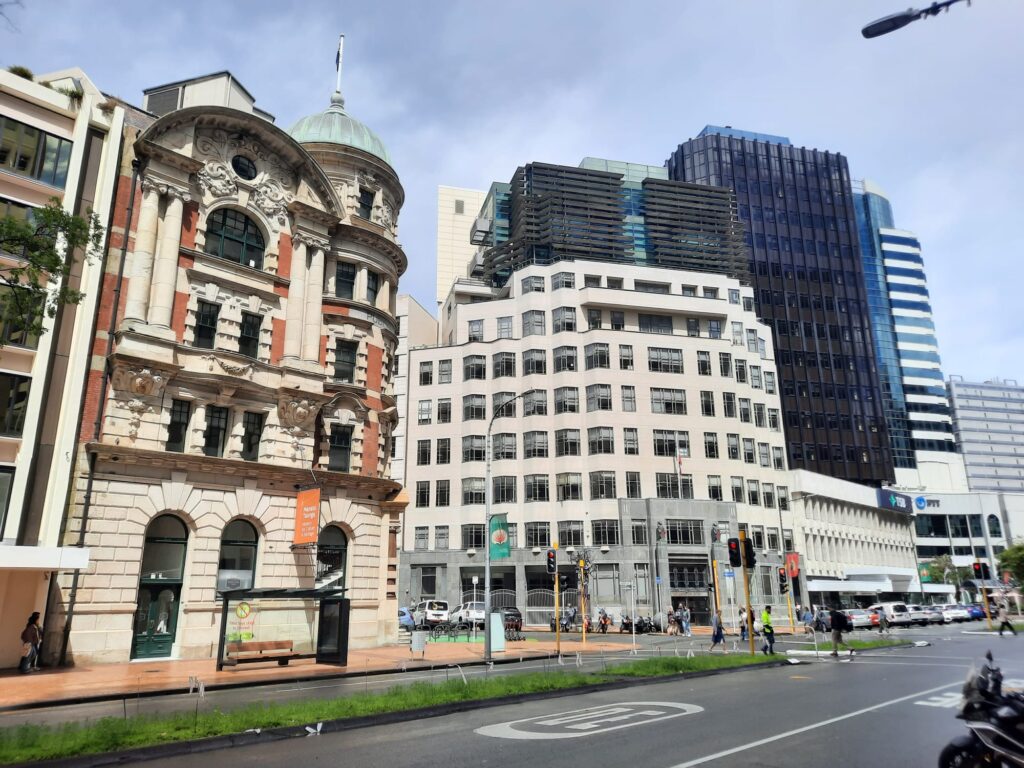
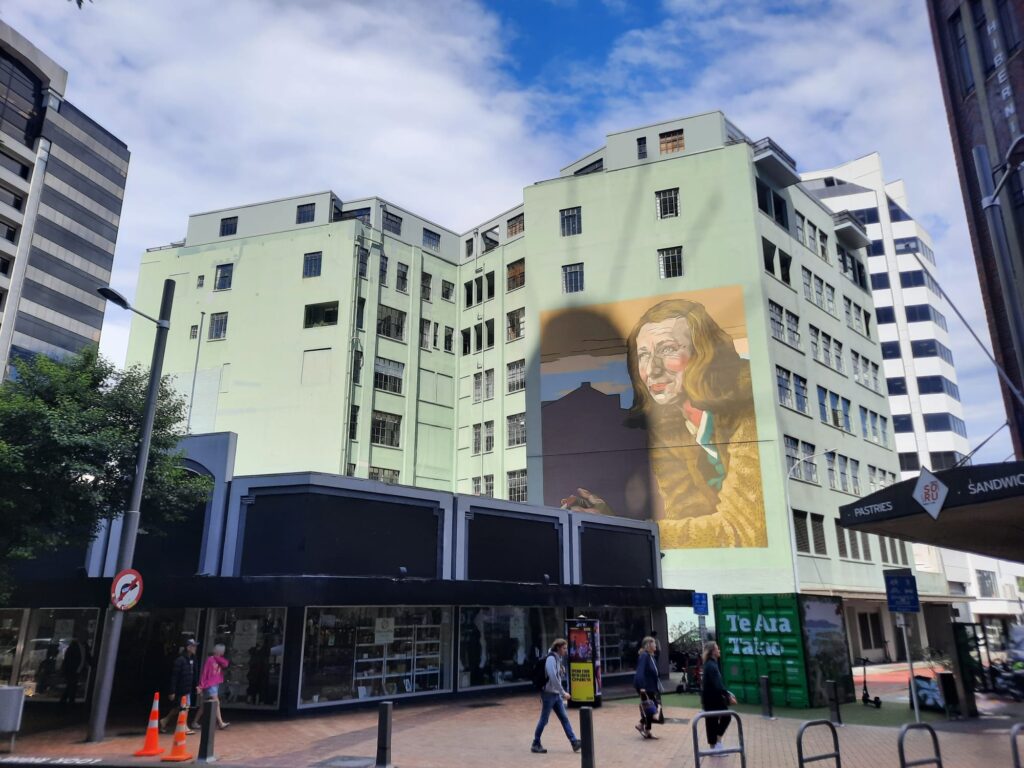
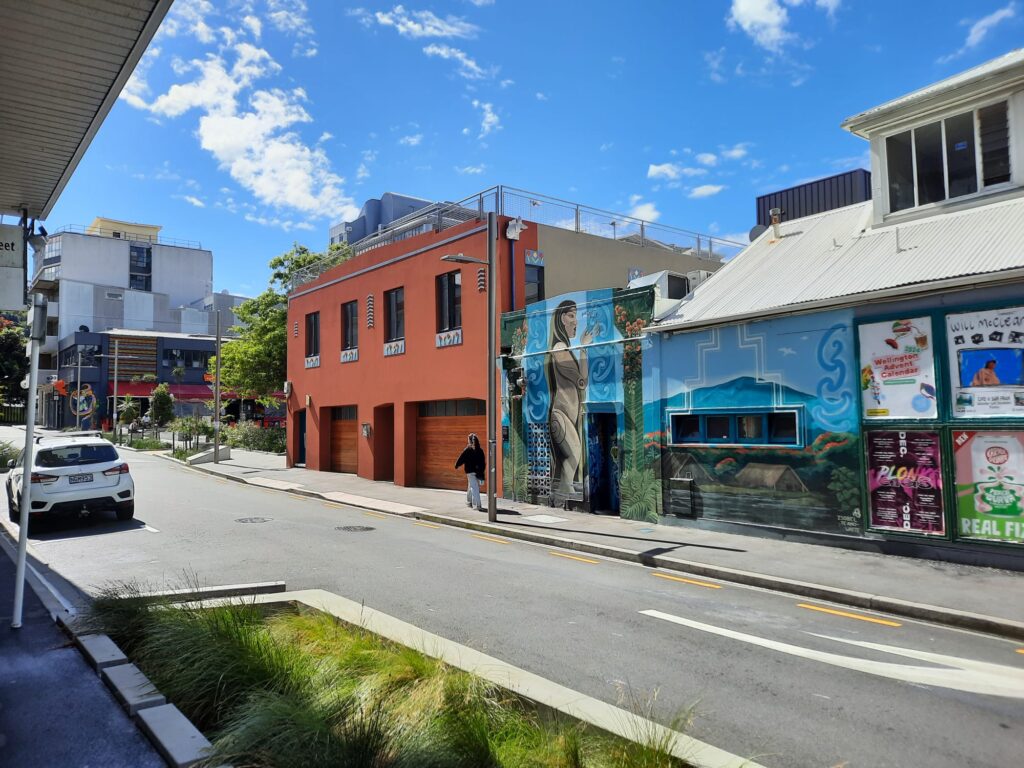
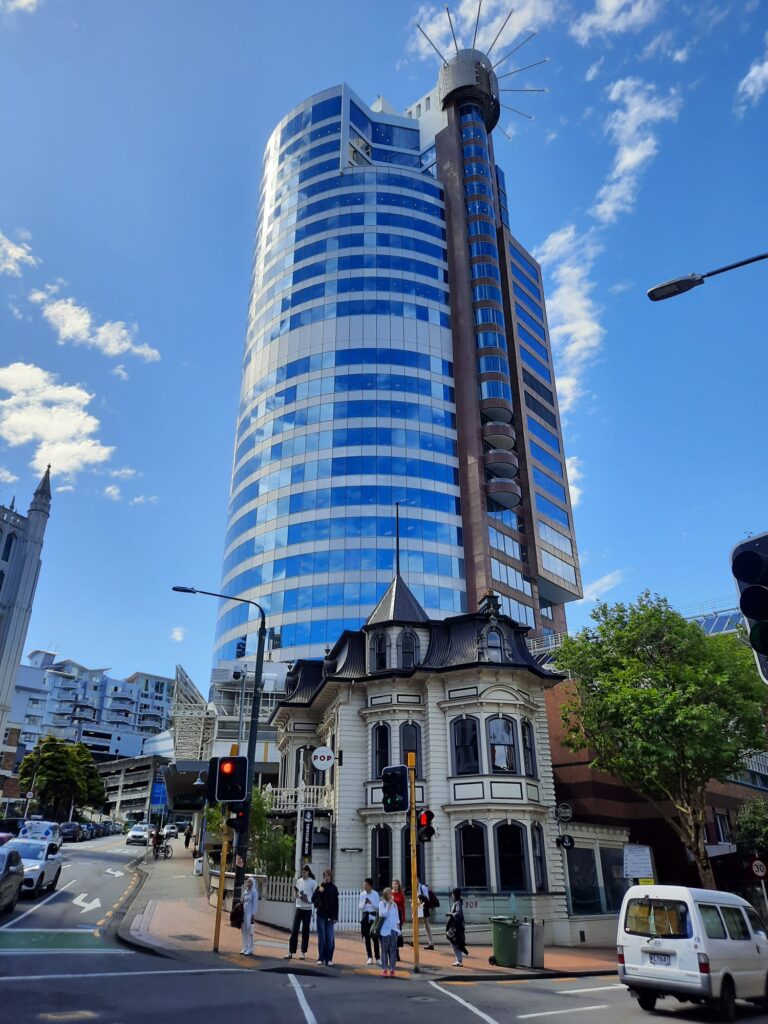
Architecture and Street Art in Wellington
Walking around Wellington, and particularly if you follow some of the suggestions above, you will see plenty of art and architecture. Be alert to what’s around you and you’ll soon get a sense of the different stages of the city’s development.
In the early days in Wellington, there wasn’t much stone available for building, but there was plenty of wood. There are lots of nice, characterful Victorian buildings around as a result. Stone and brick slowly took their place, particularly in downtown areas, but Wellington’s suburbs have some great examples of this early style. Also notable are Wellington’s Art Deco buildings. Like Roosevelt’s New Deal, the New Zealand Government became a major instigator of building projects during and following the Depression. You’ll spot plenty of streamline-style buildings around.
As the decades progressed, Wellington has been shaped both by the needs of a growing population, and by the need to provide earthquake-safe structures. Buildings have replaced one another, so you’ll often see different styles on adjoining plots. And a serious look at earthquake safety following the Christchurch earthquake in 2011 and Kaikōura earthquake in 2016 has seen many buildings either reinforced or condemned. This includes some modern buildings, while others, like the Majestic Centre (Wellington’s tallest building) or Wellington High School on Taranaki Street, are interesting and sufficiently earthquake-proofed examples of modern and Postmodern architecture.
You’ll also see a number of murals contributing to the city’s street art scene. You’ll find portraits of notable residents like Rita Angus (above), as well as more fantastical and colourful scenes. Ever-changing, but you can find guides such as this one here.
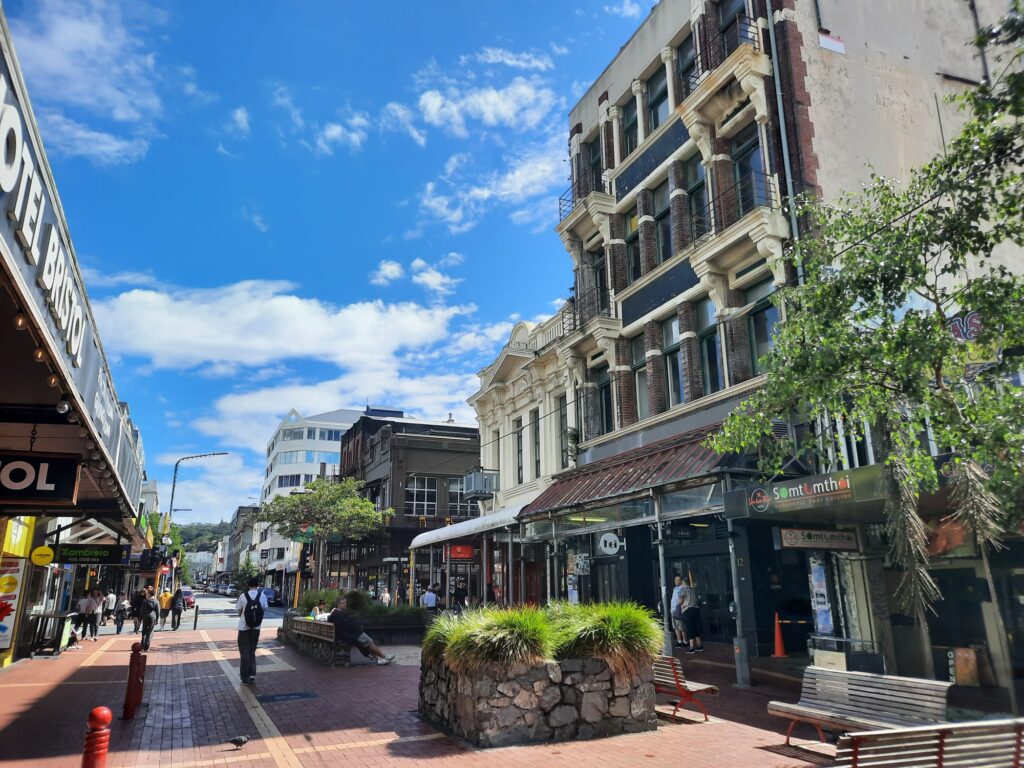
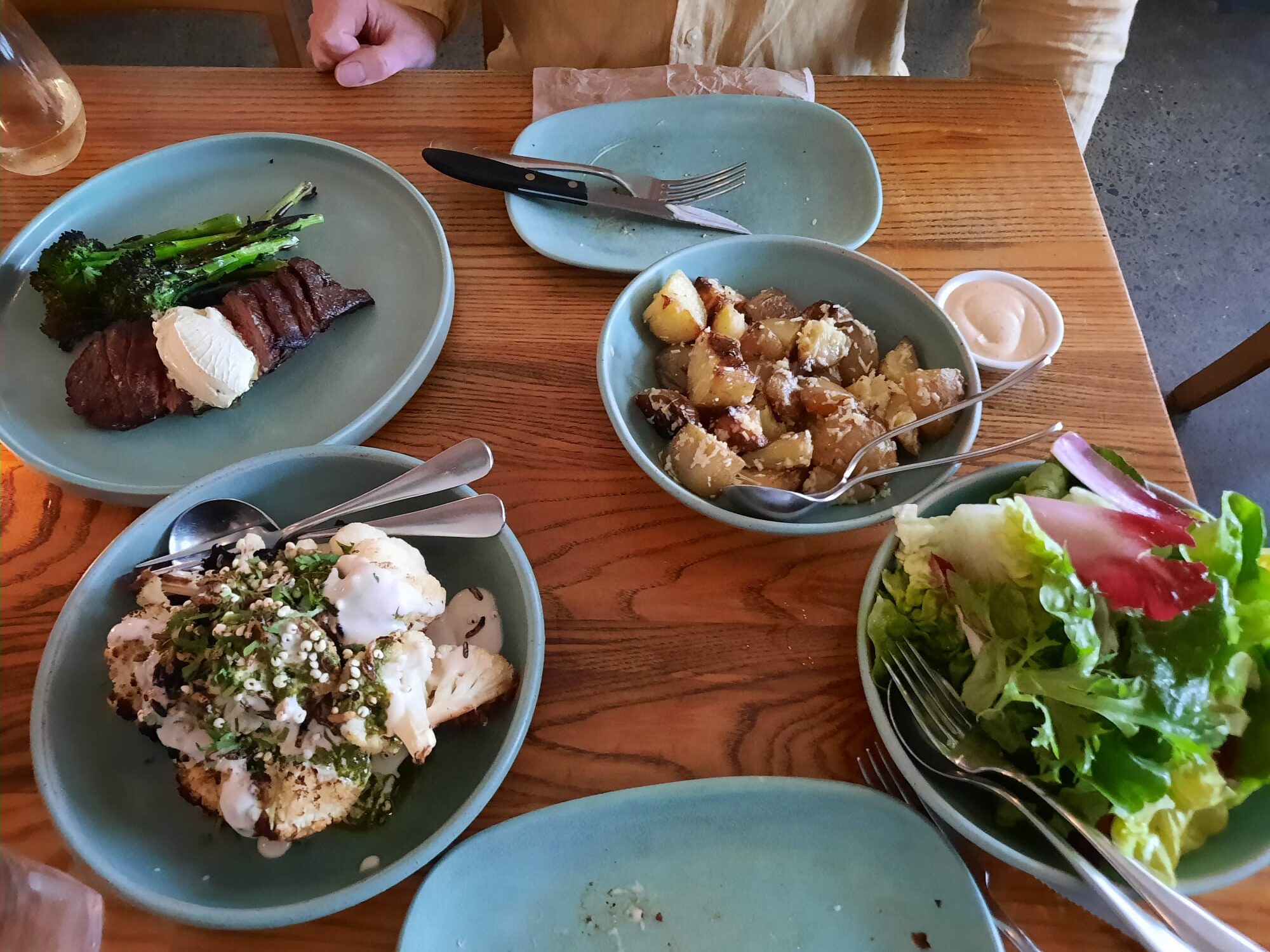
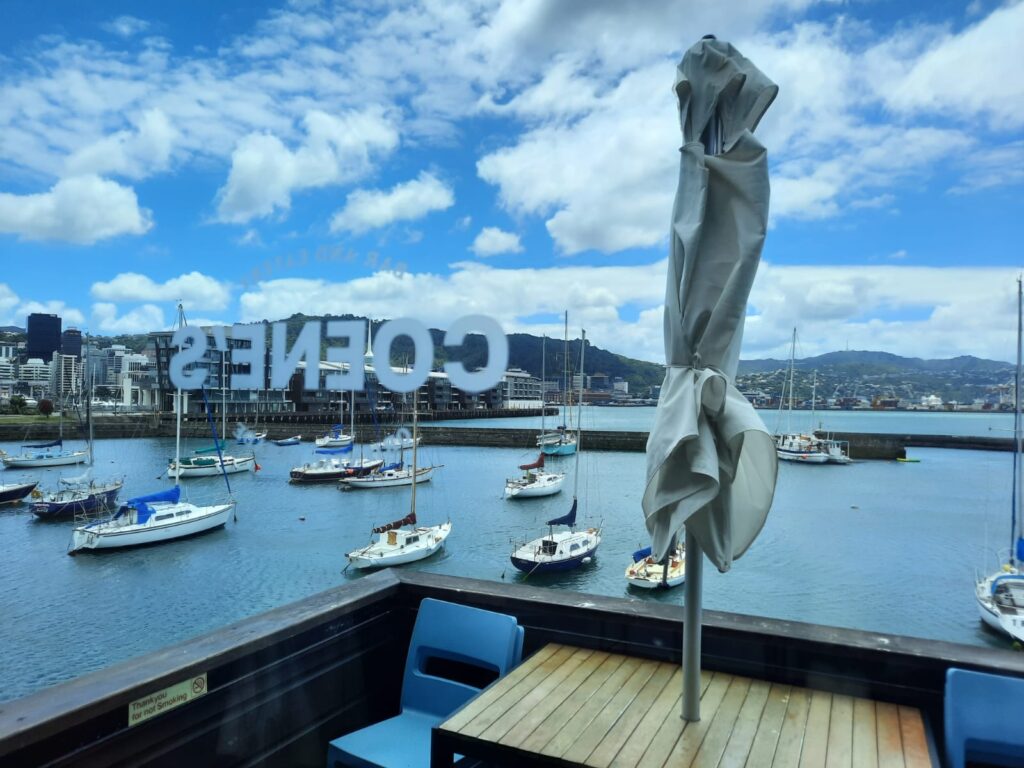
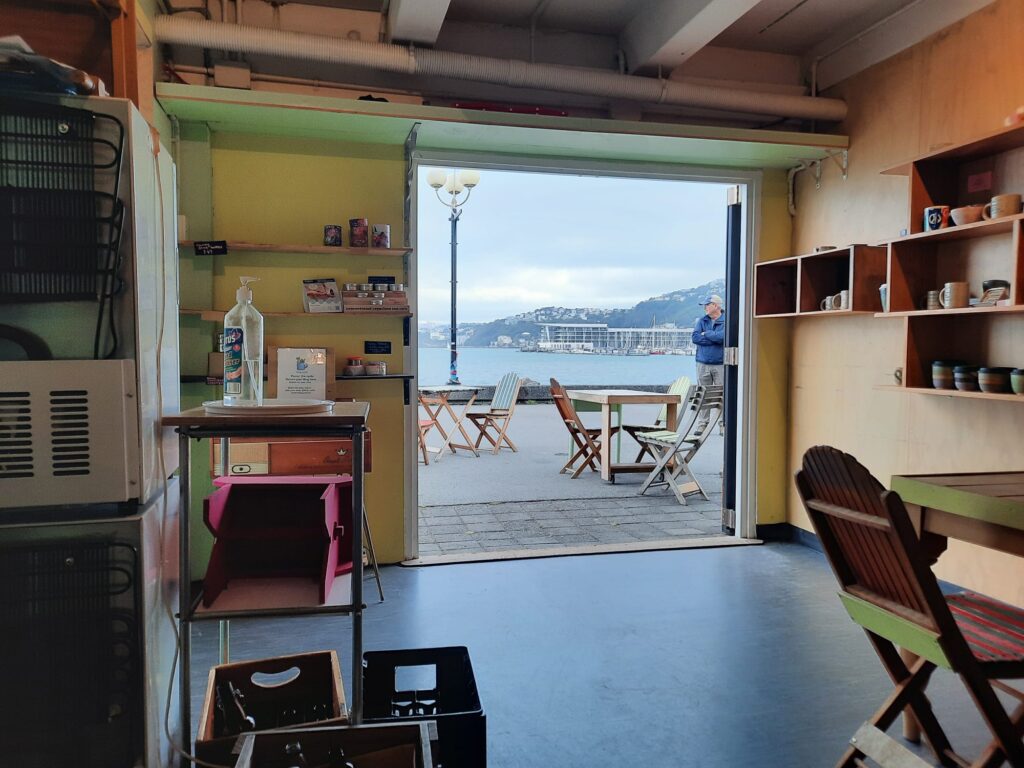
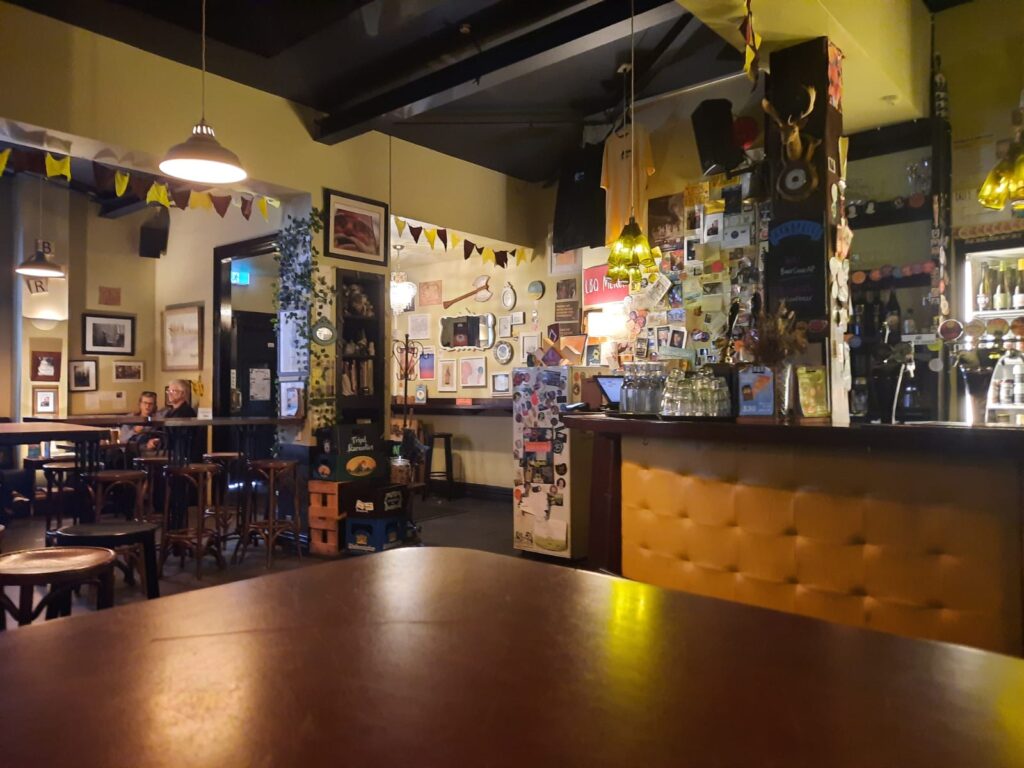
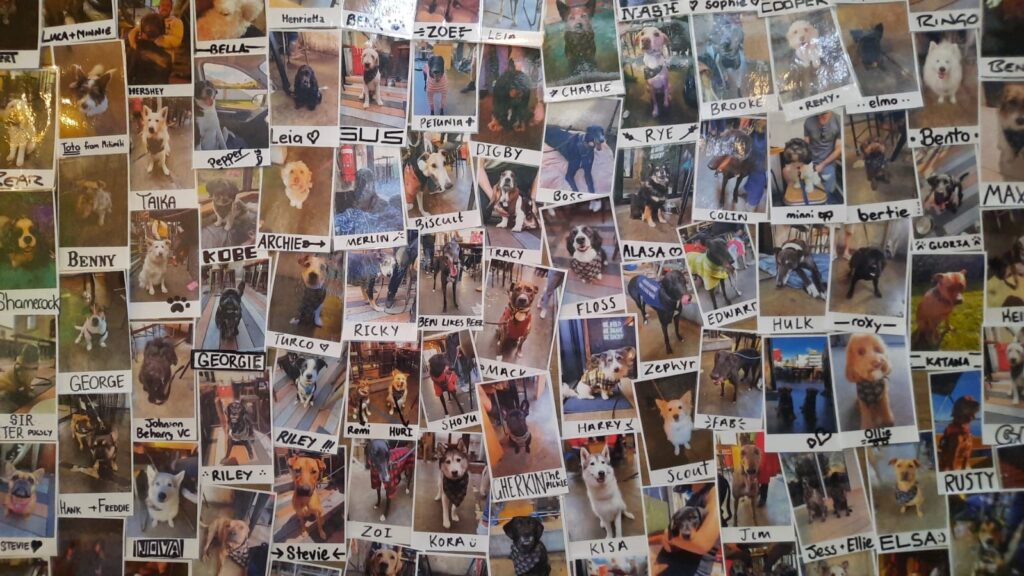
Food and Drink
And finally, all that walking and sightseeing is going to make you hungry and thirsty, so let’s take a look at some places to eat and drink.
Wellington has a vibrant cafe and restaurant scene. There are plenty of places for relaxed dining, with big flavours and good coffee. Speaking of coffee, Wellington is ahead of many cities when it comes to the environmental impact of takeout cups. Bringing your own cup is often encouraged, with some places providing no disposable options. If you don’t have a reusable cup with you you can always pick one up as a souvenir of your trip, or sit in and enjoy your coffee the slow way.
Cuba Street is an excellent place to find options for both food and drink. We liked Loretta, but vastly over-ordered – beware the big portions. At the far end from the CBD, we’ve heard good things about Heyday Brewing Co. There’s also a nice development of a former Hannah’s shoe factory just off Cuba Street, where we tried out Fortune Favours for beers and Mr. Go’s for food: both recommended. If you find yourself in Oriental Bay there are not as many food options as we had expected so you might want to plan ahead. We ended up at Coene’s which had some nice seafood options, good wines, and views.
Sampling local flavours is the icing on the cake of a trip to Wellington. I hope you find this guide useful, and enjoy your own trip to Wellington. Let me know in the comments if there’s anything I’ve missed!
Trending
If you see this after your page is loaded completely, leafletJS files are missing.

